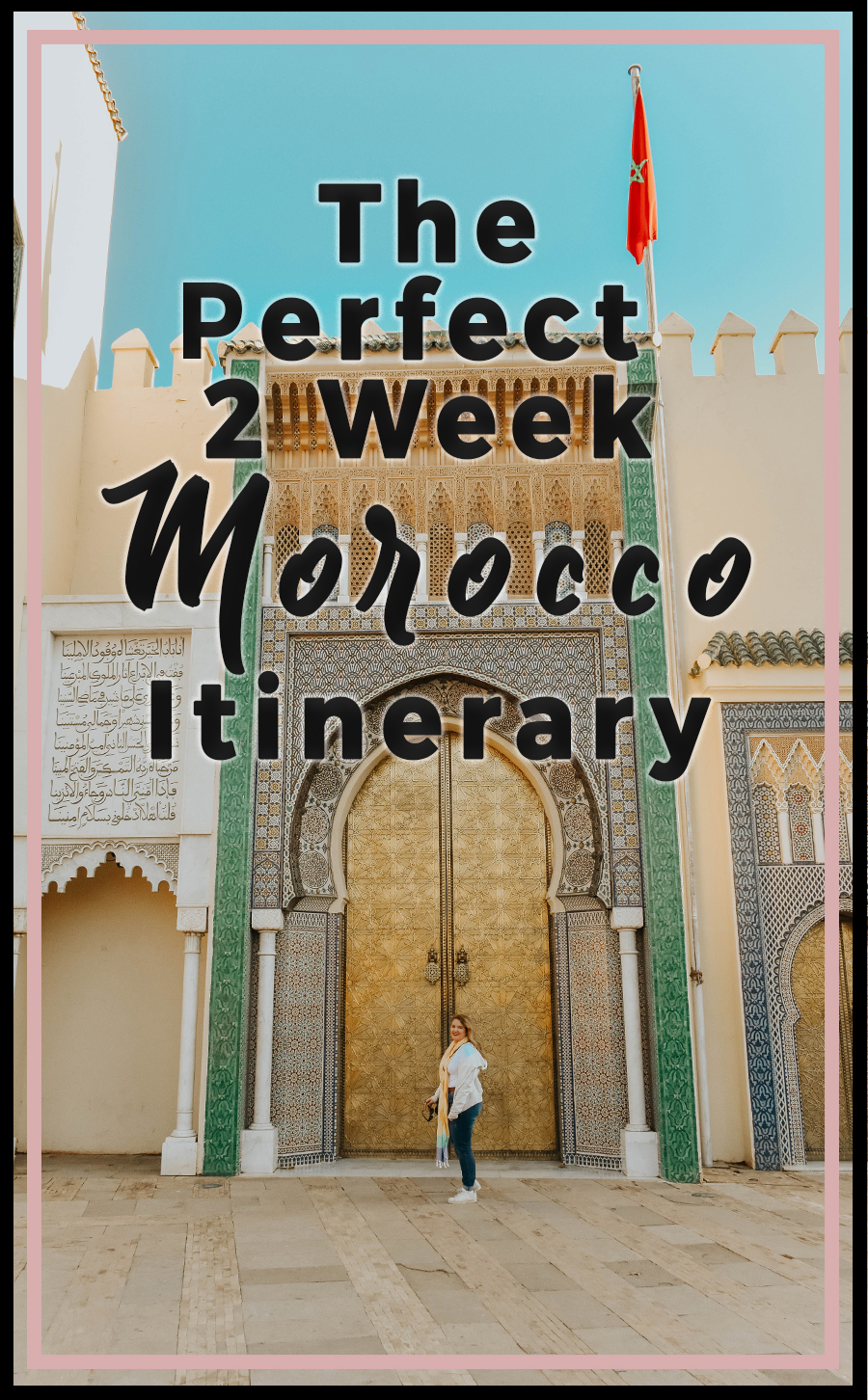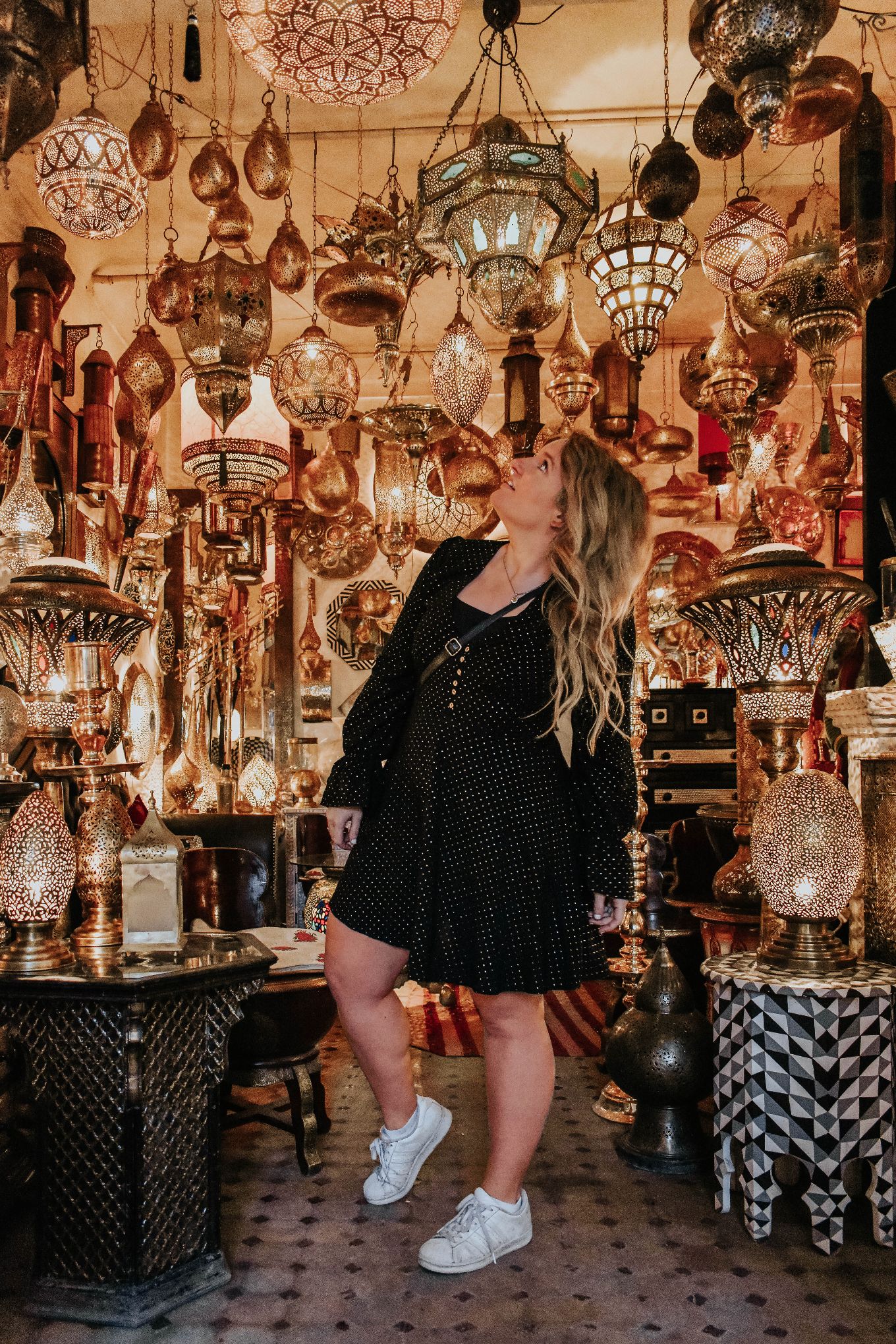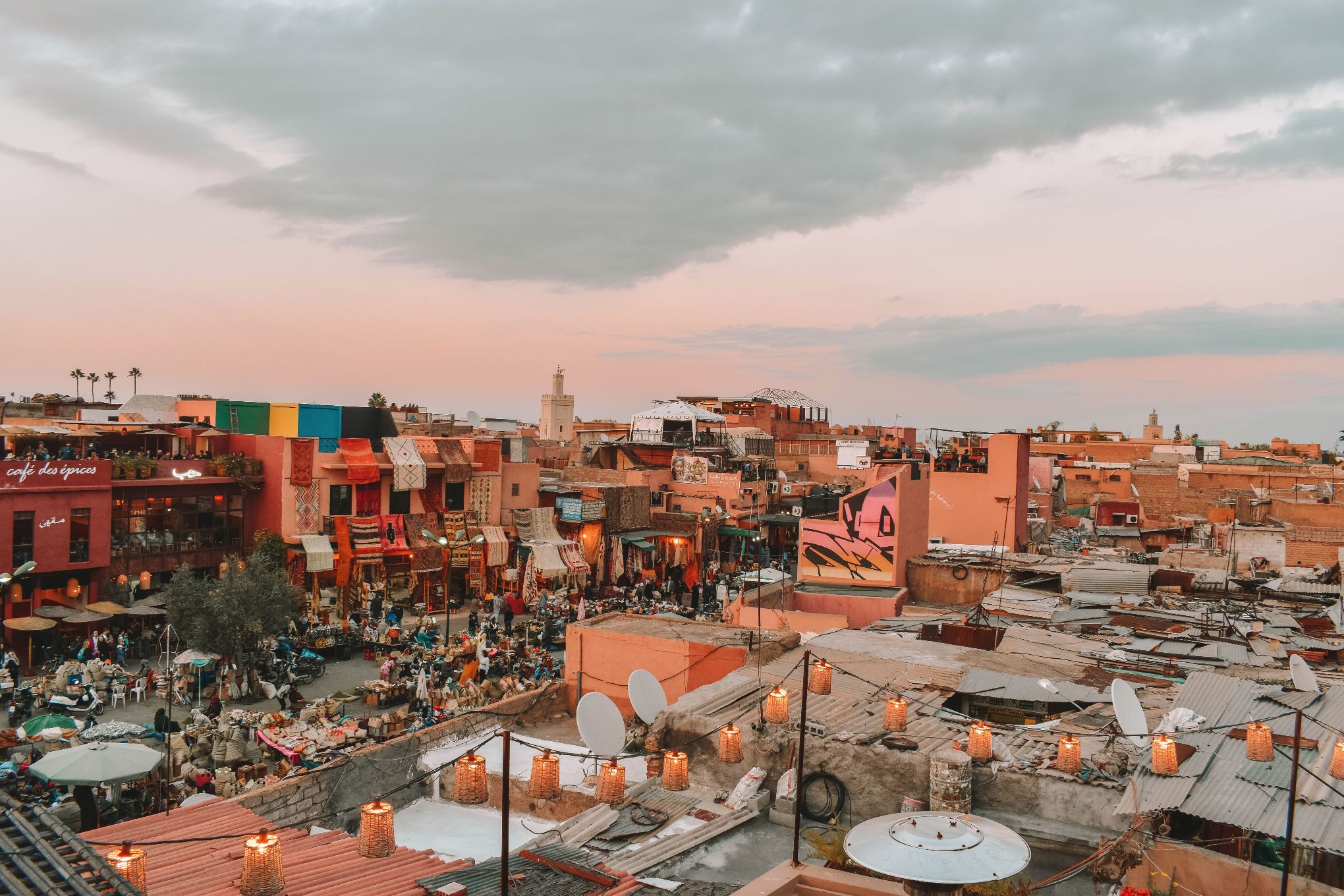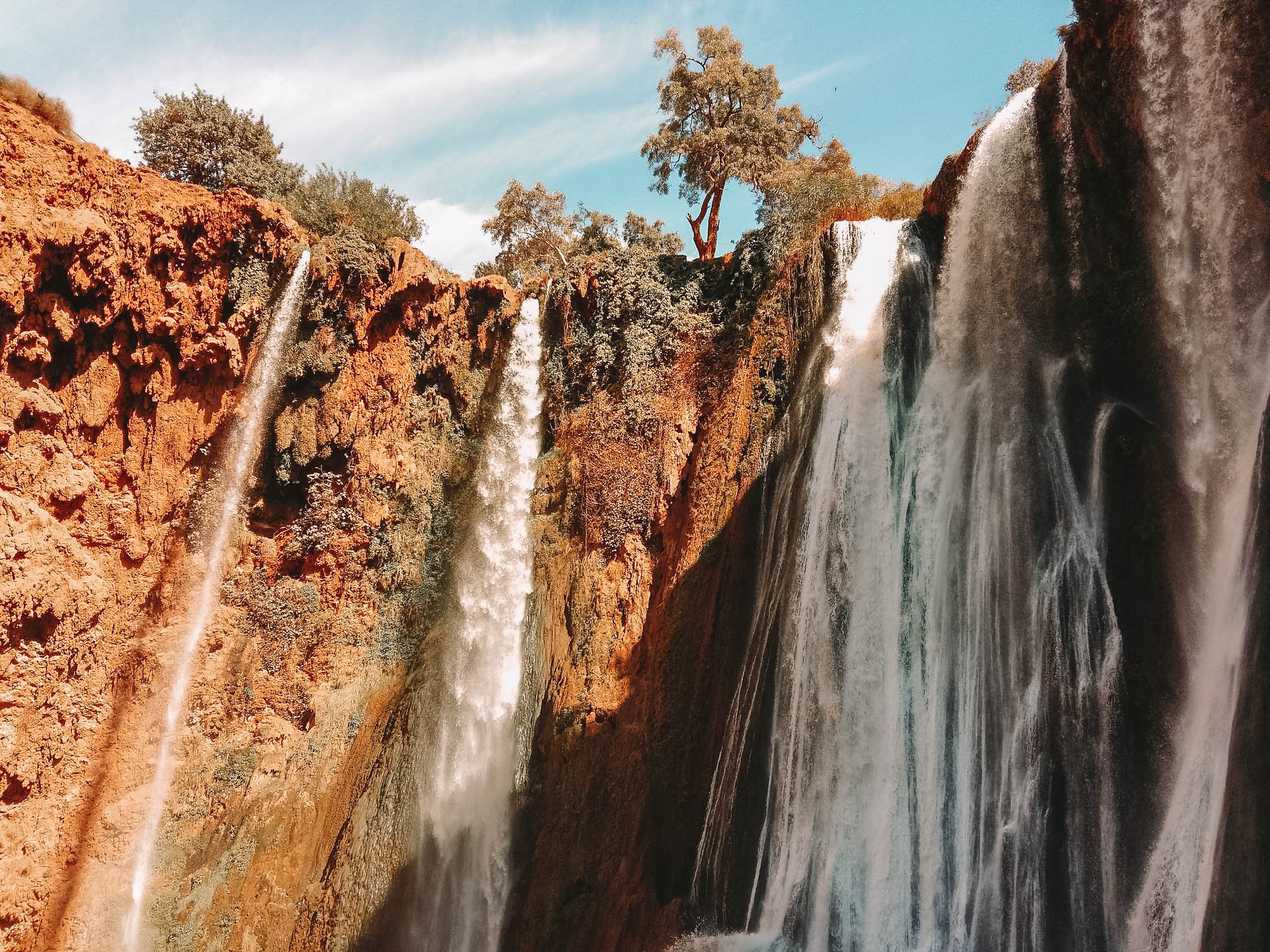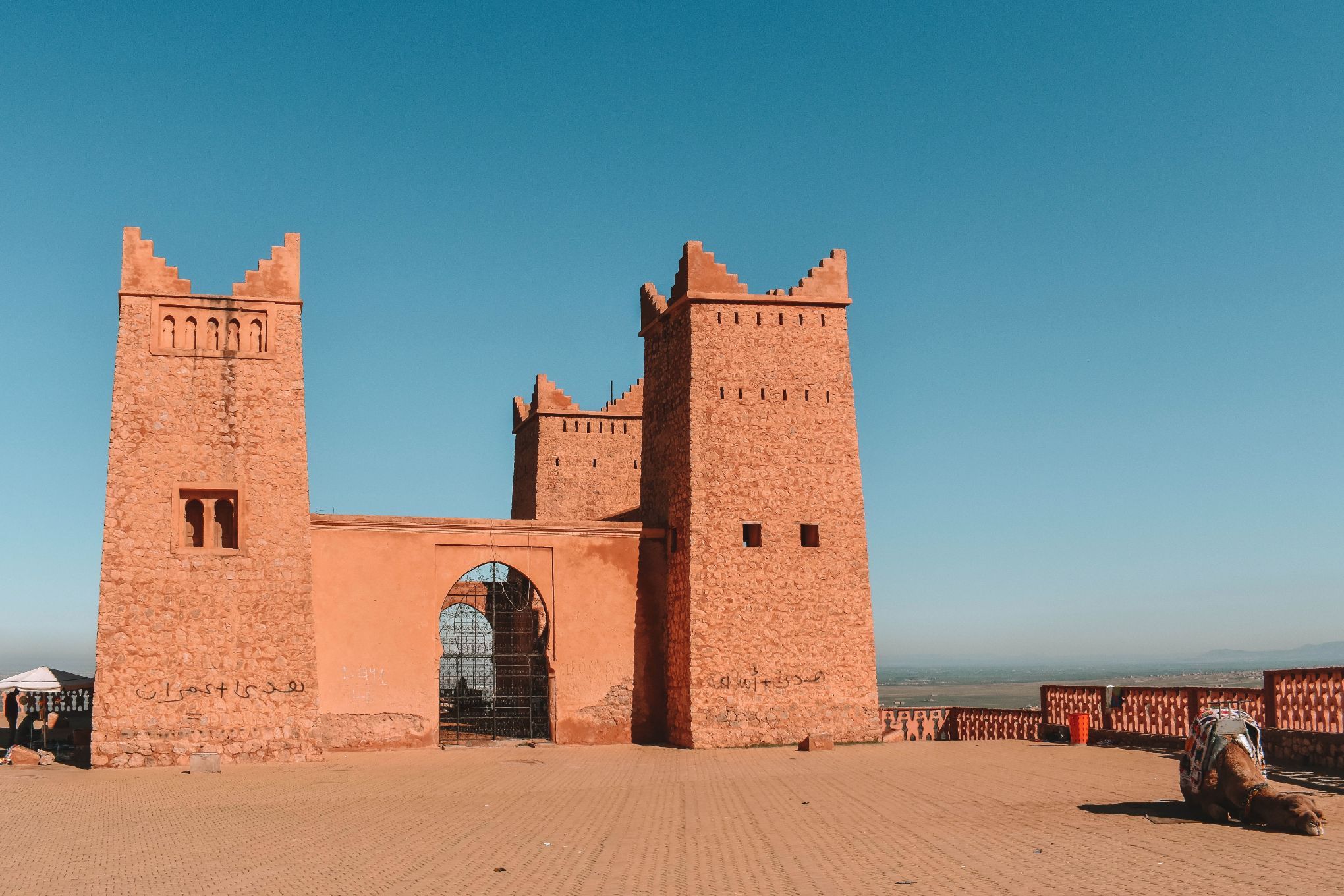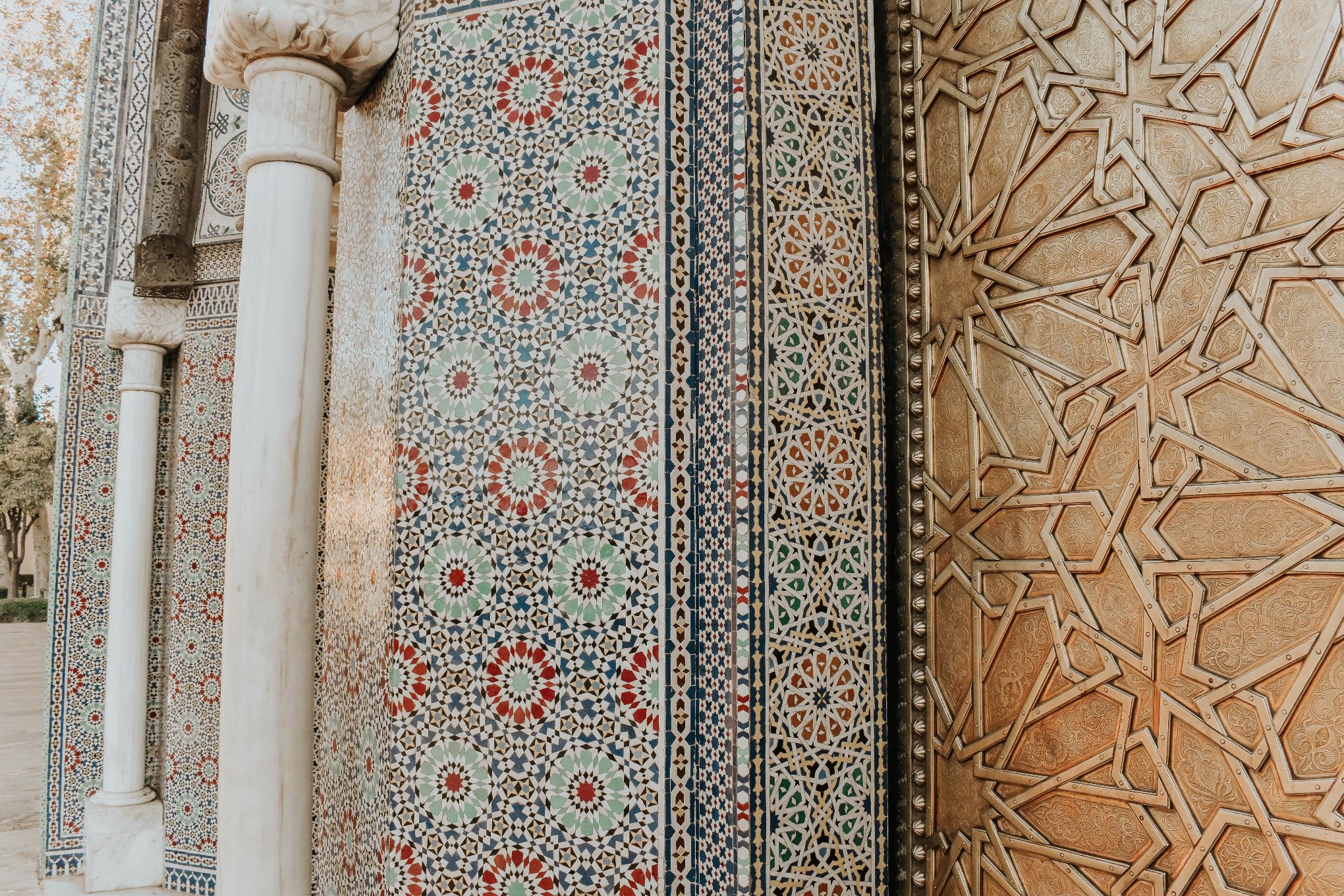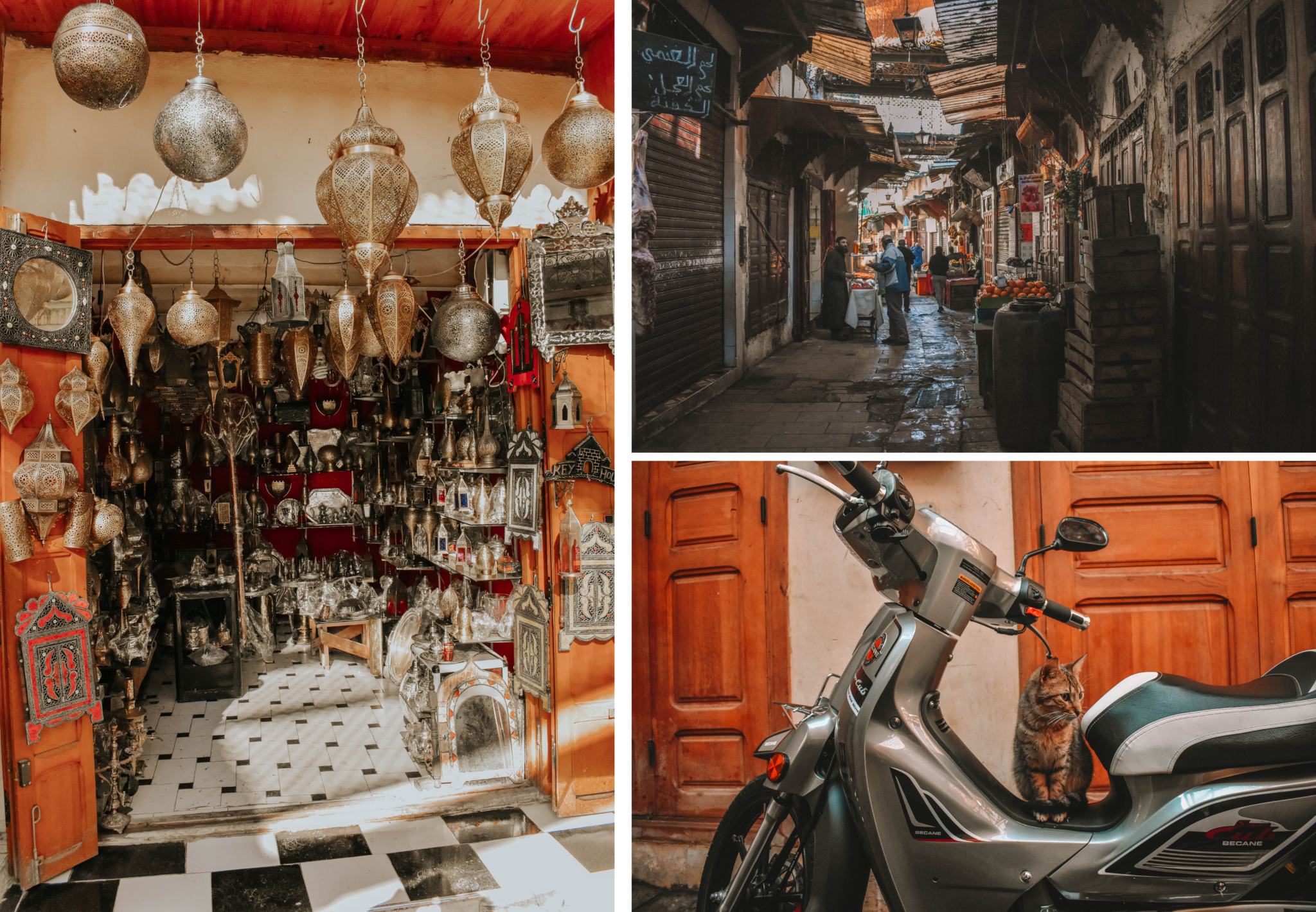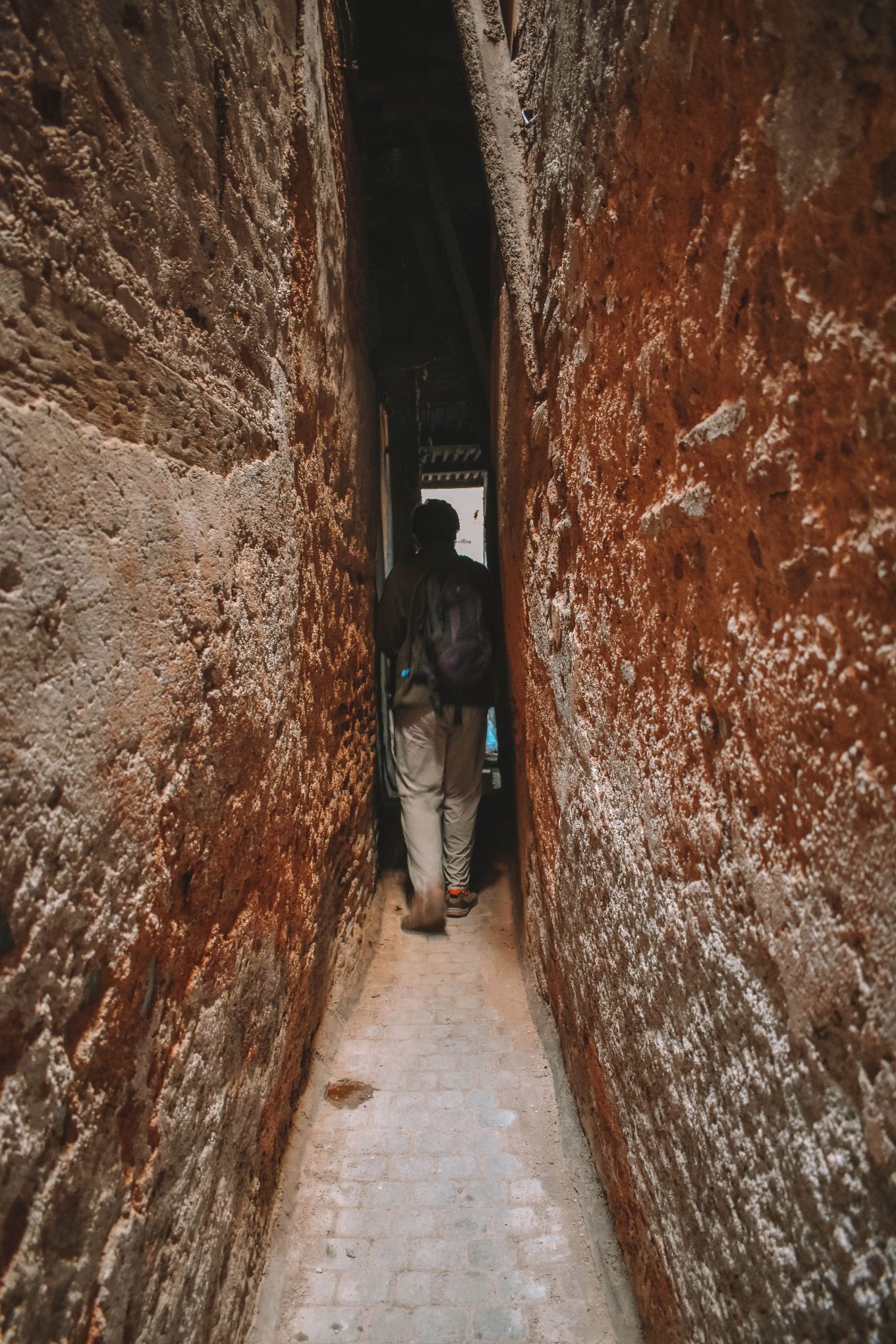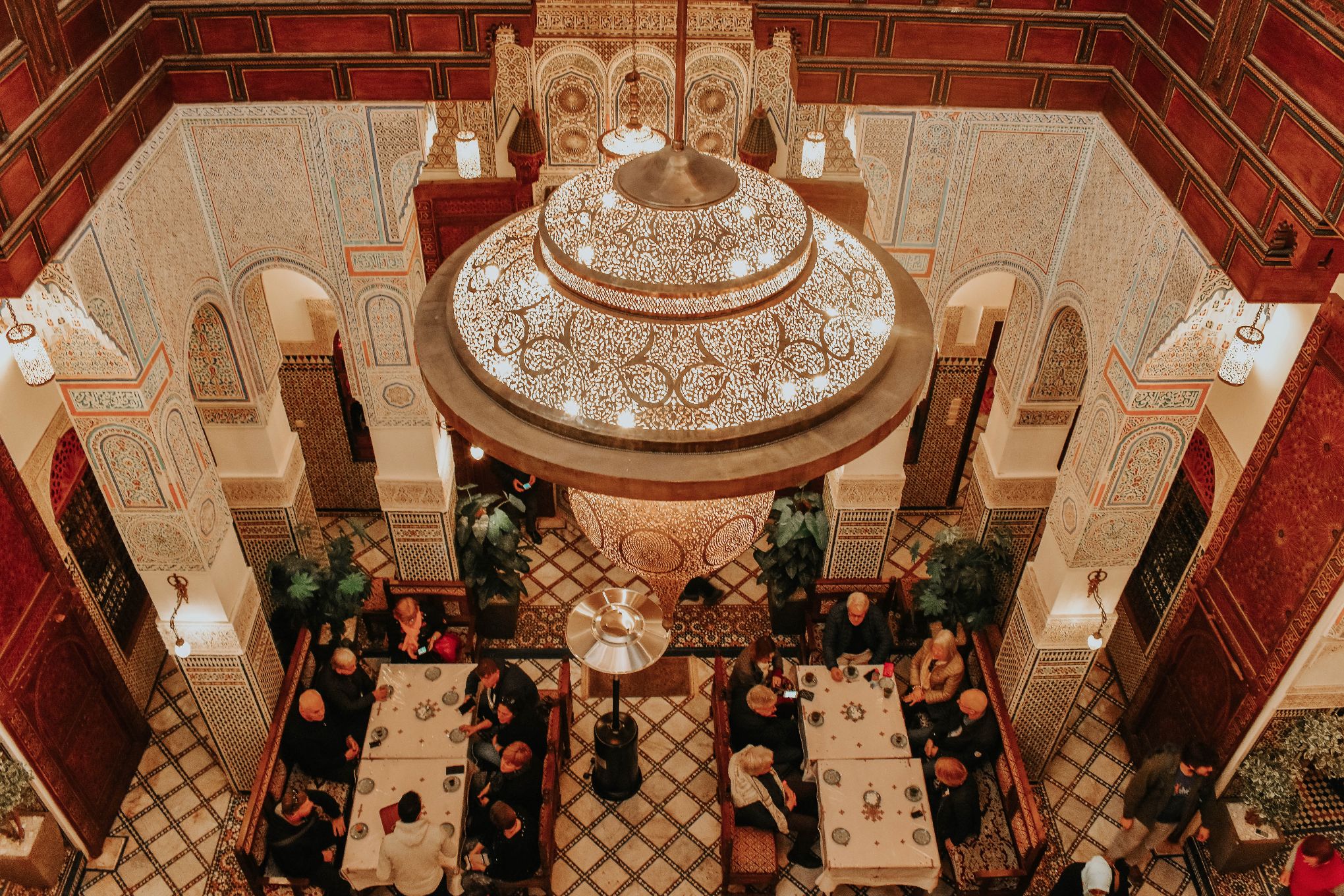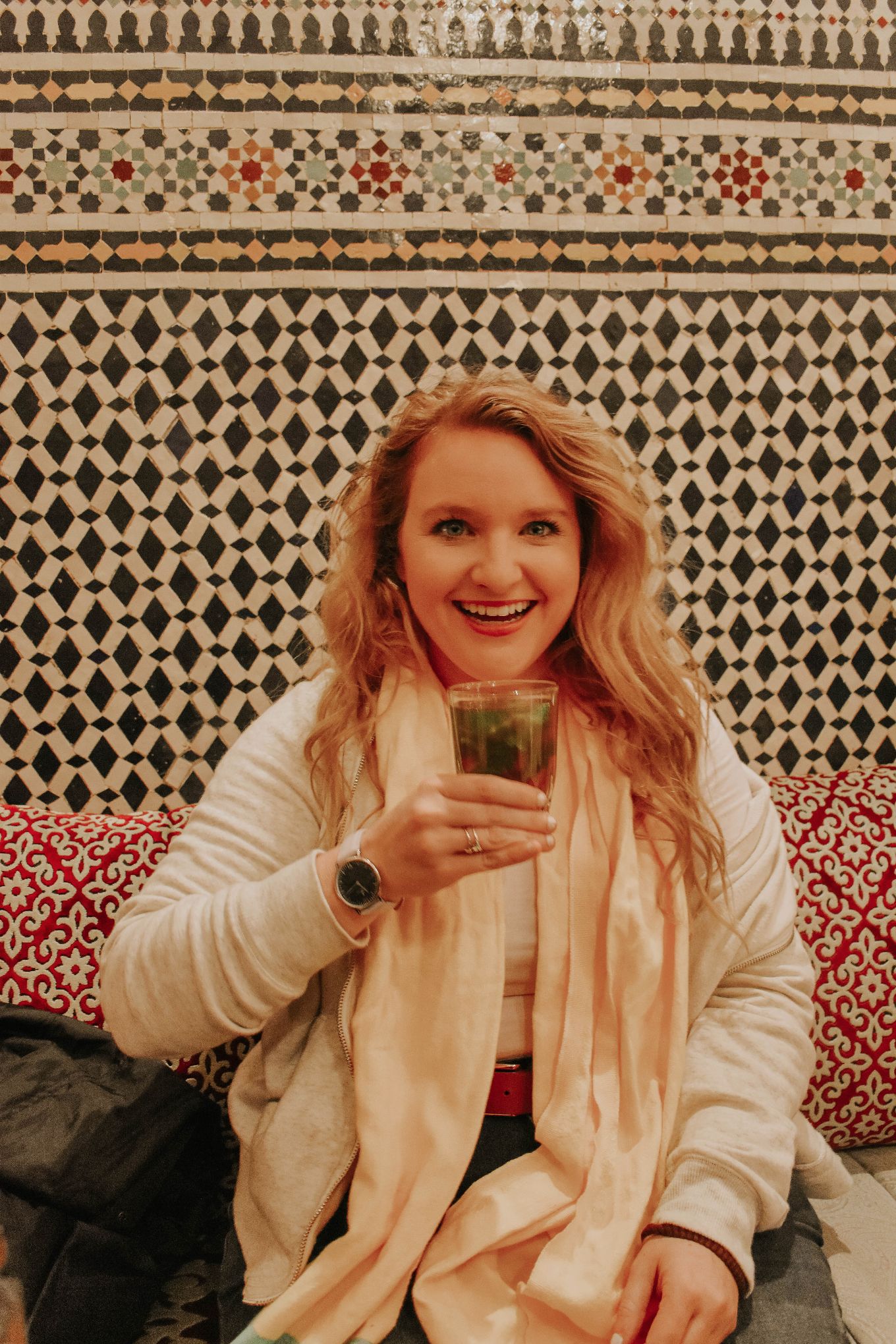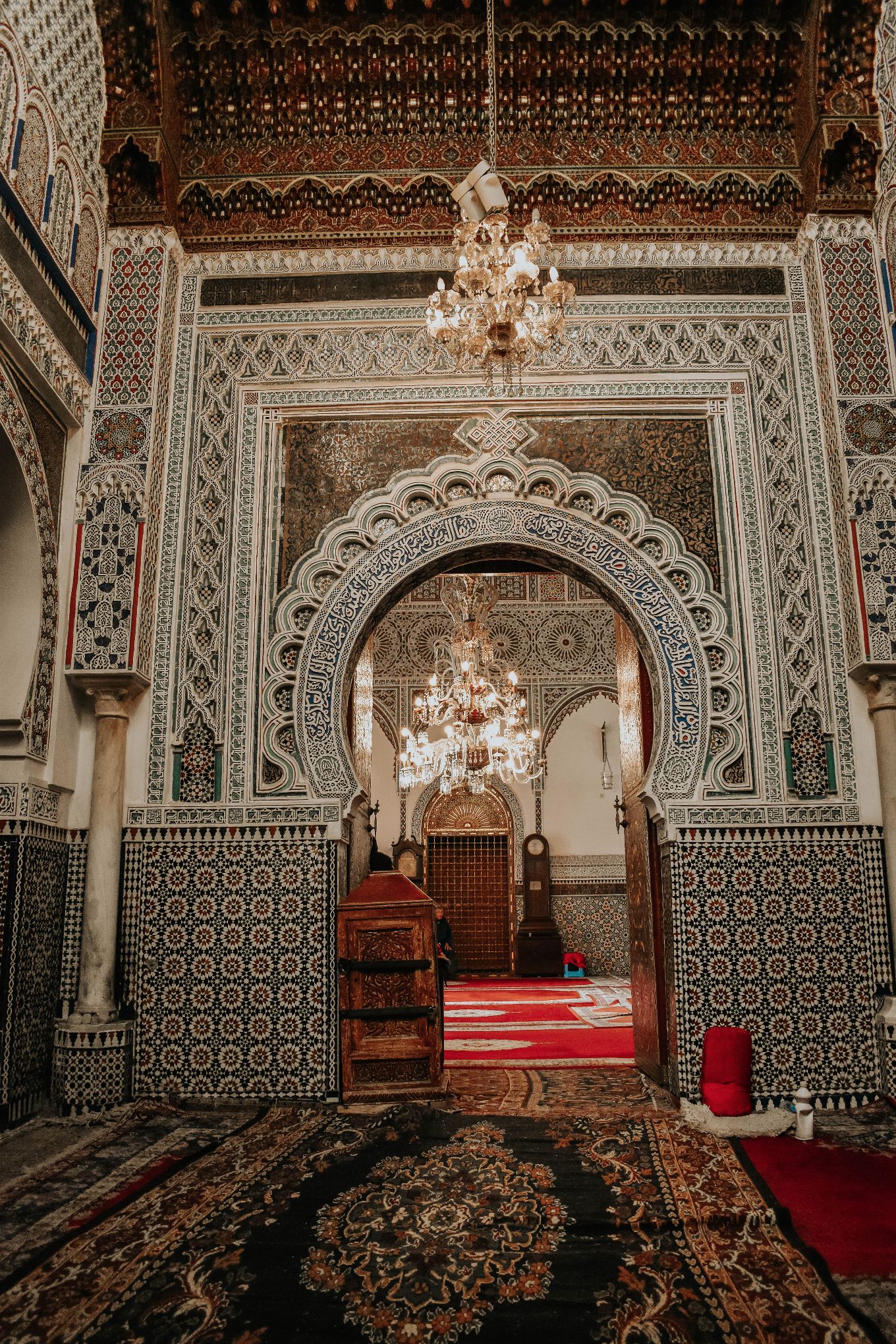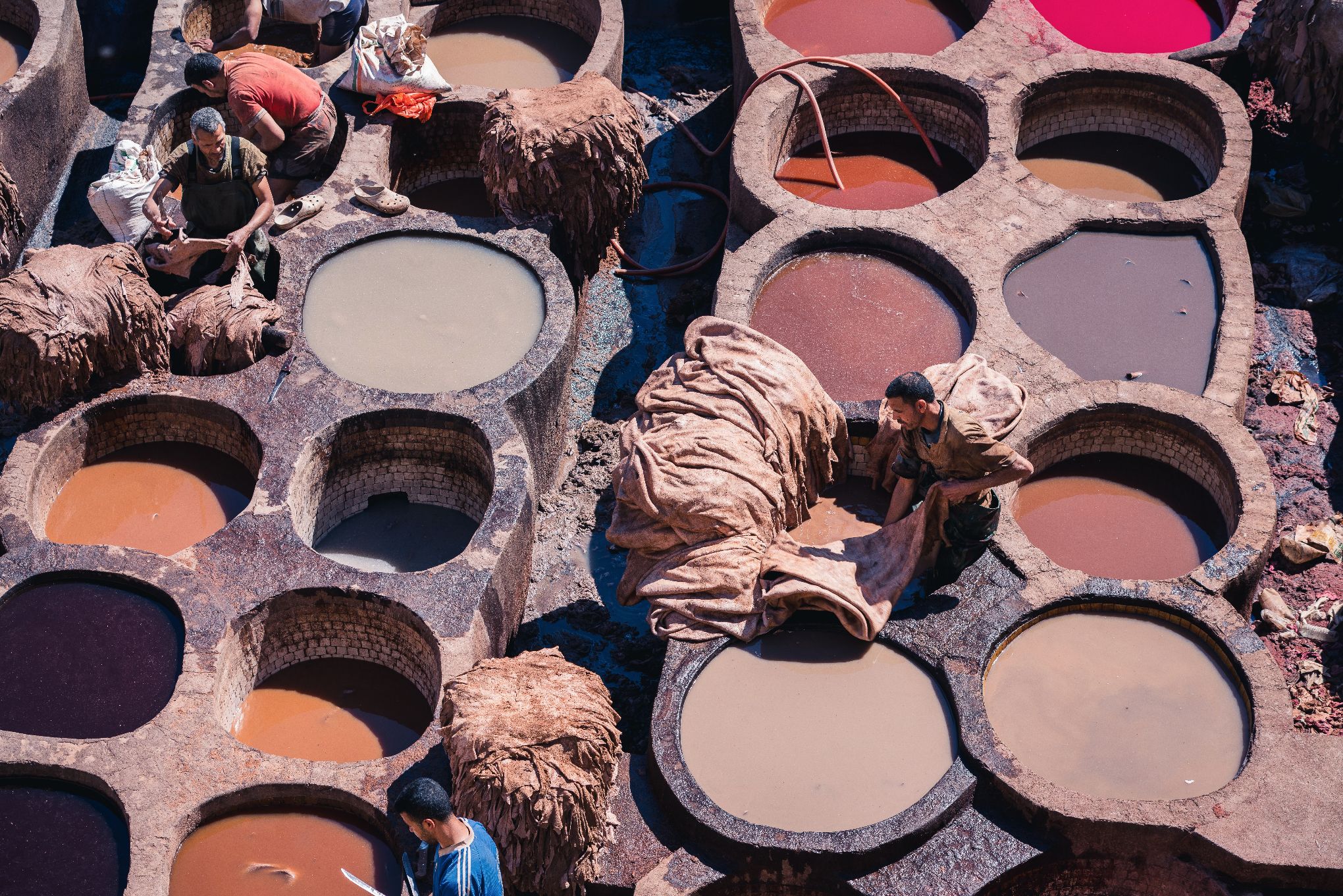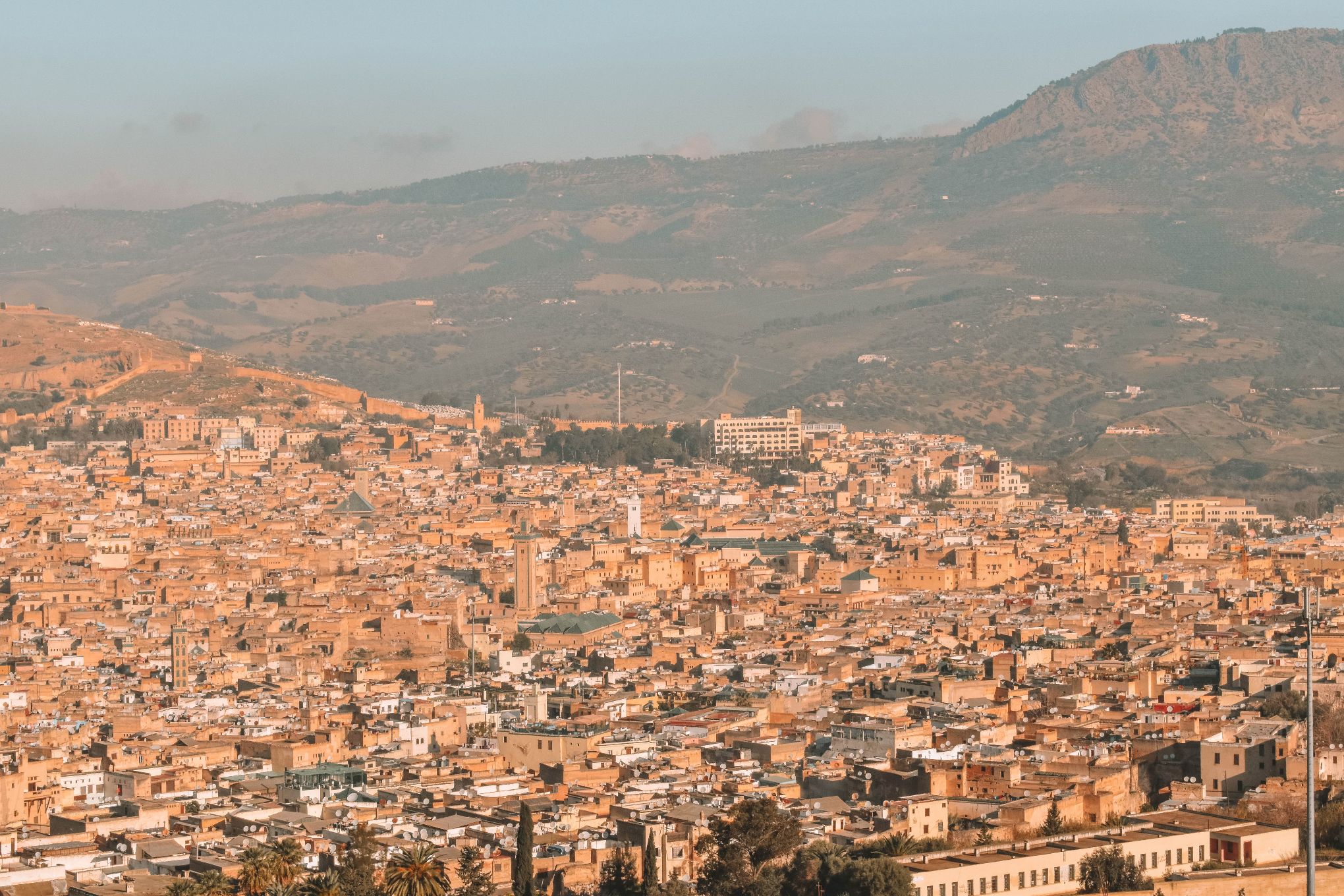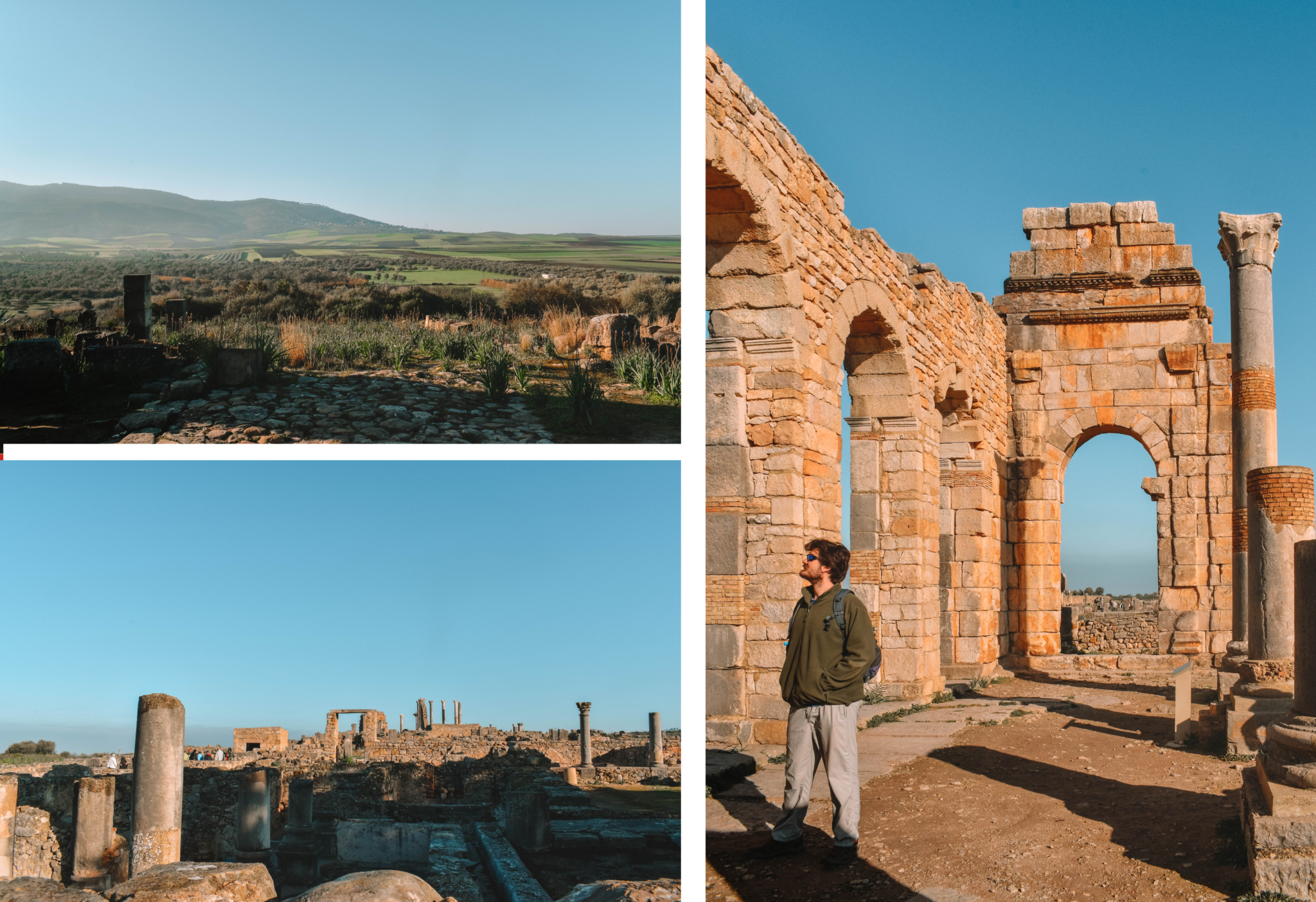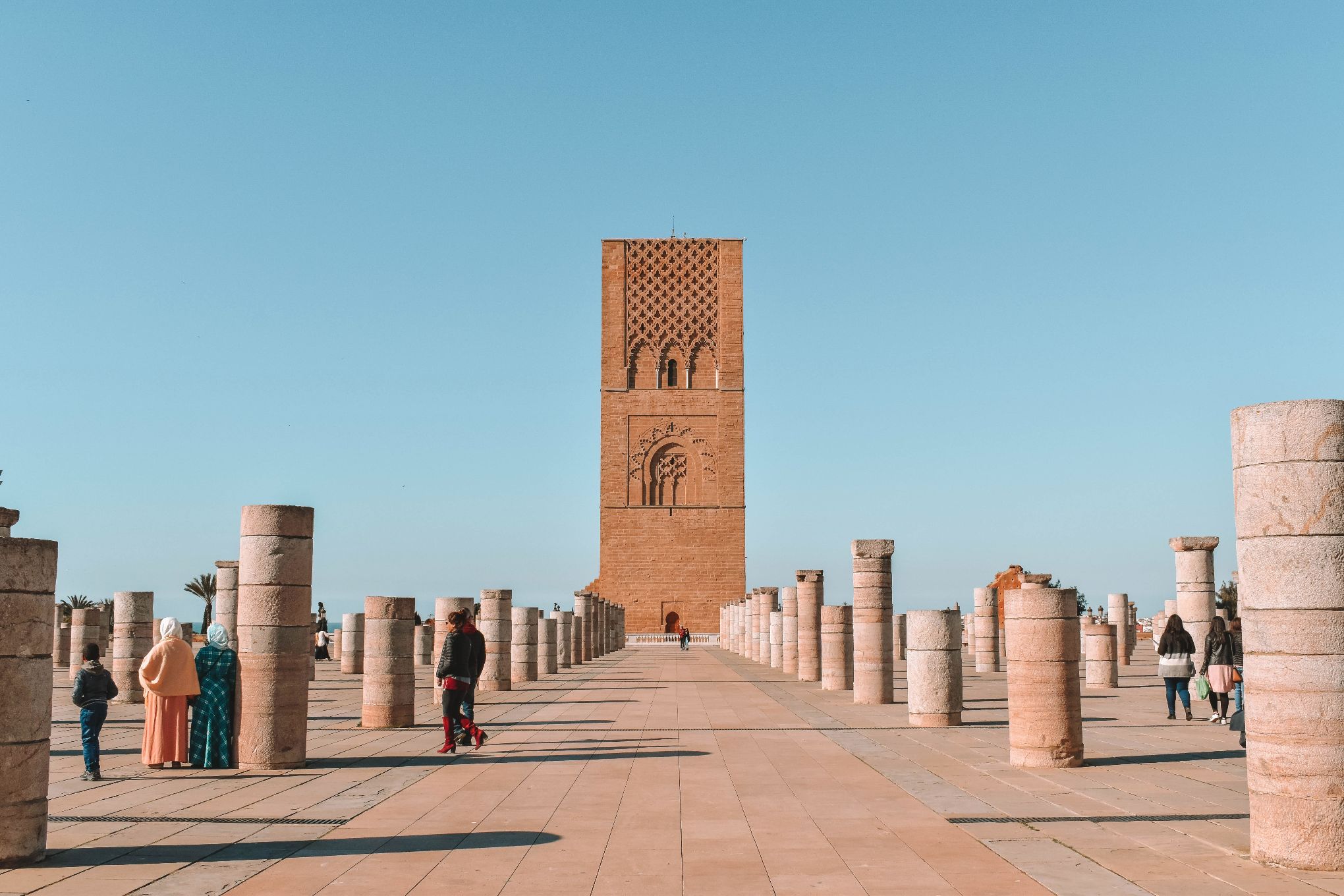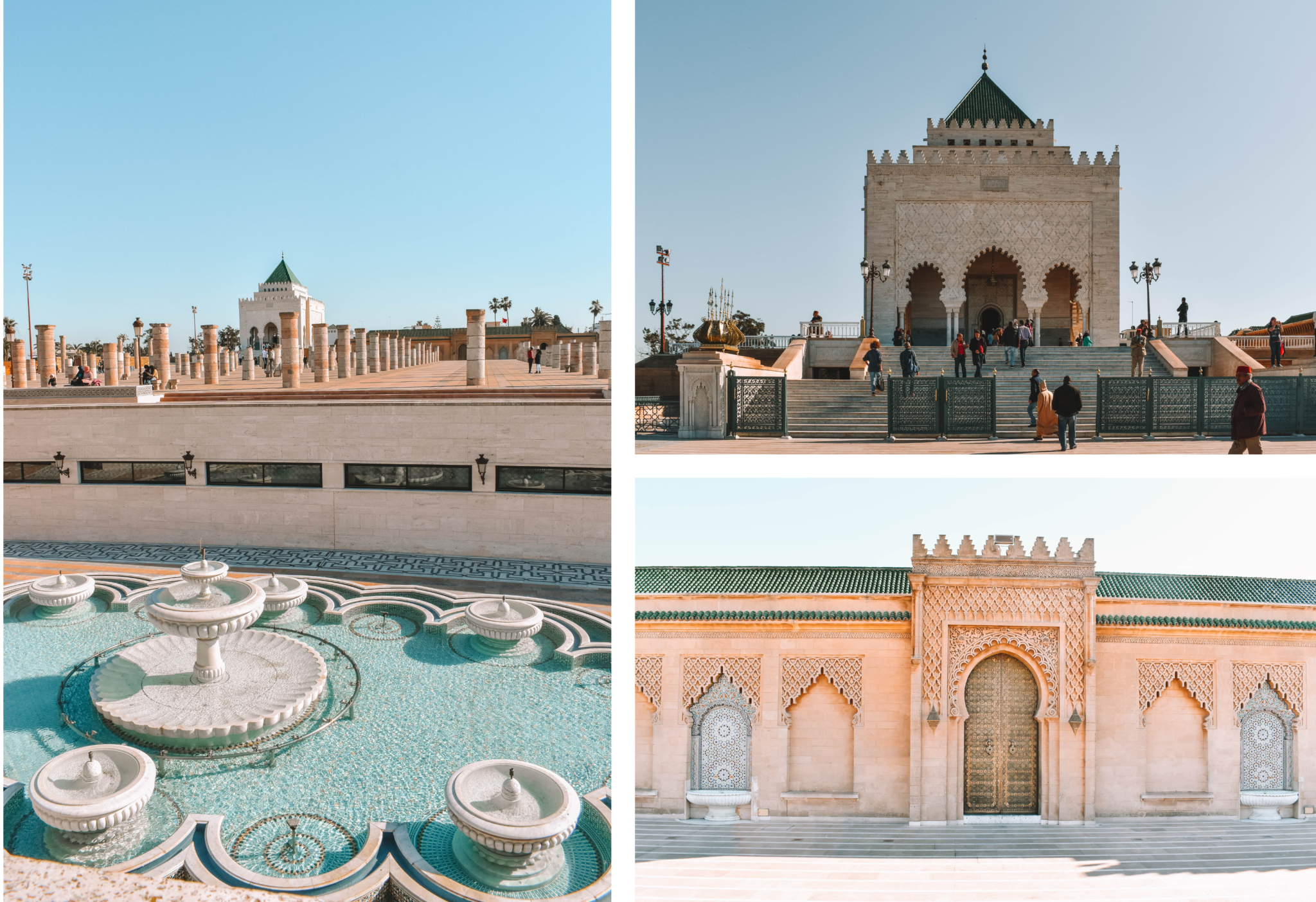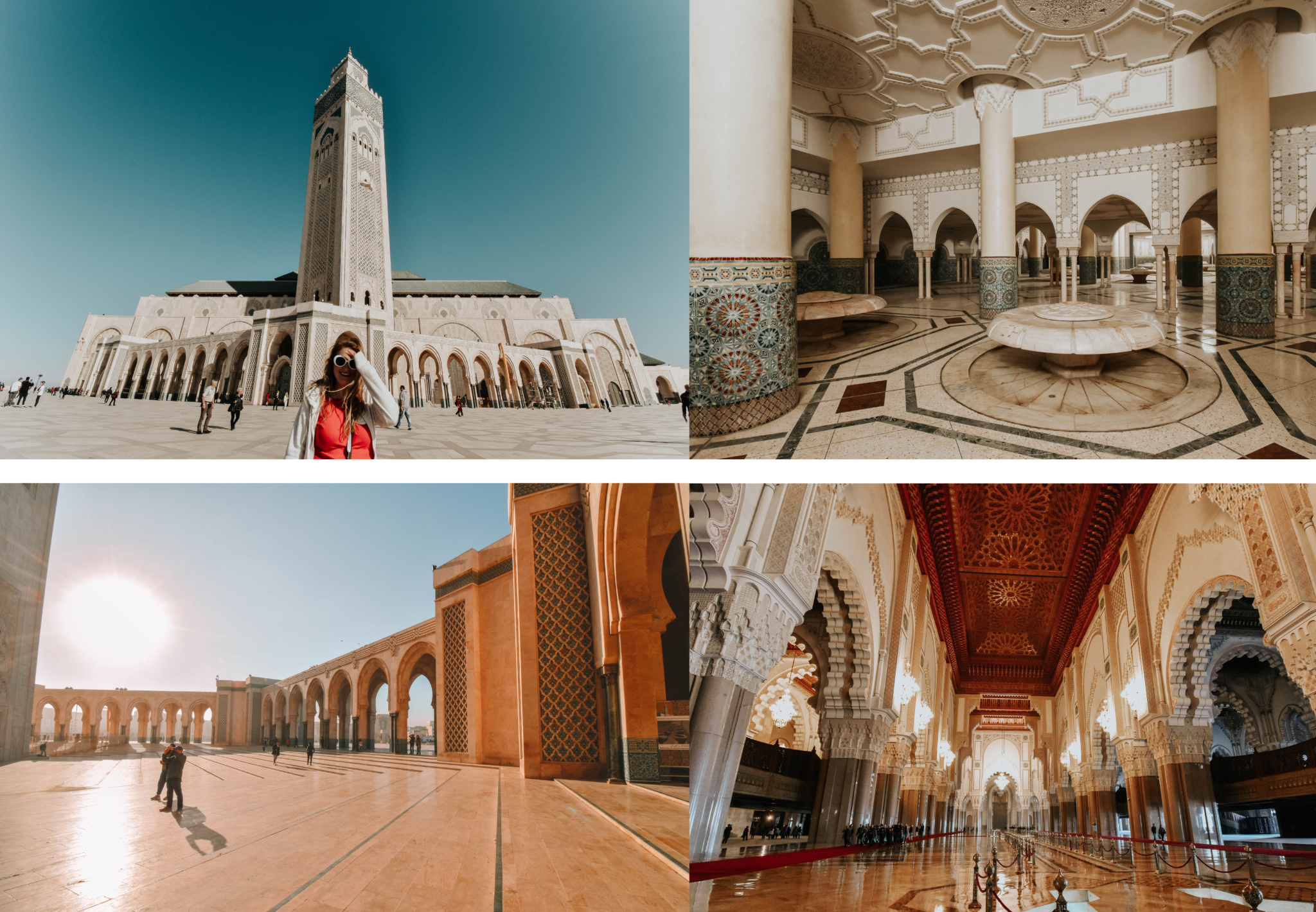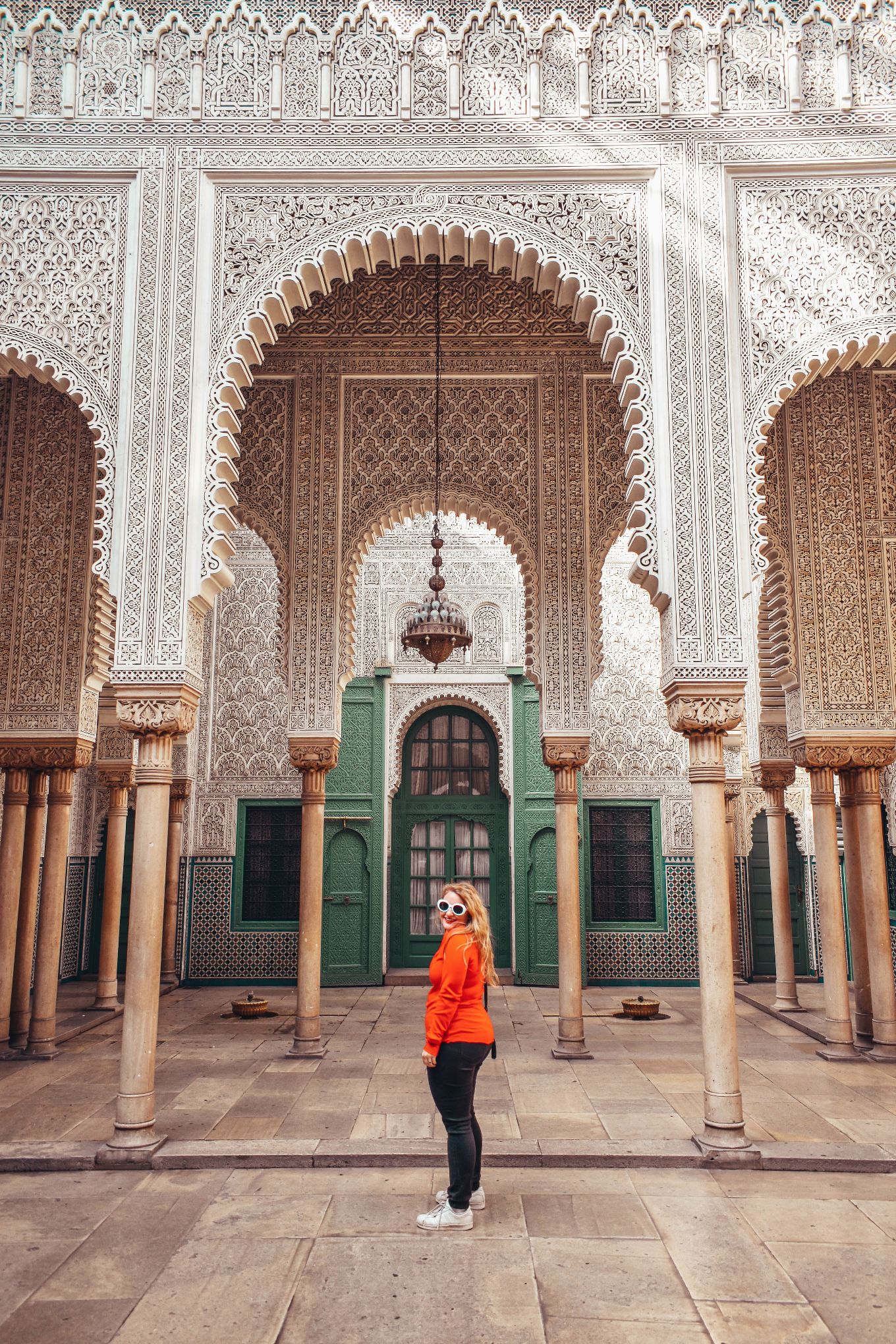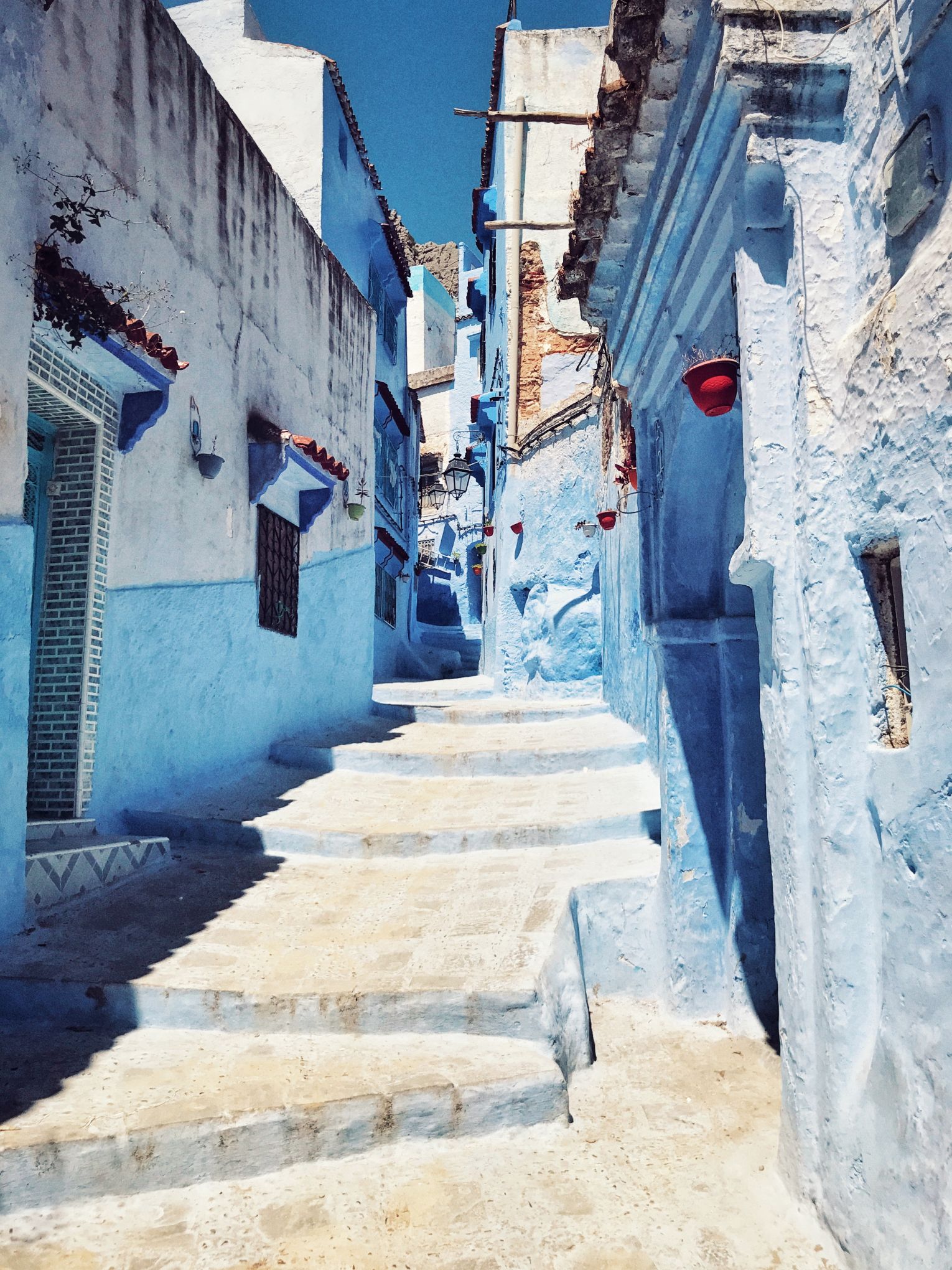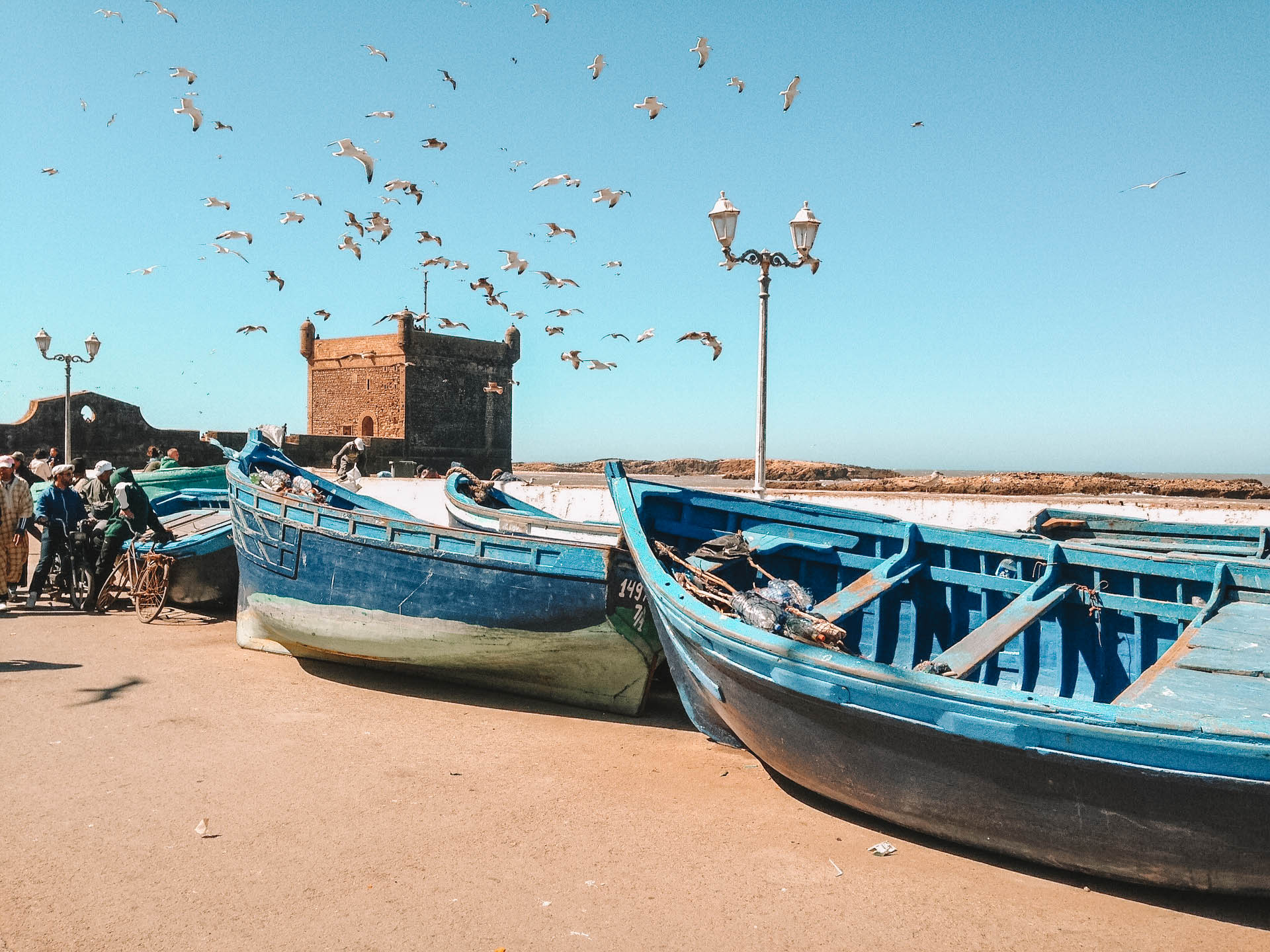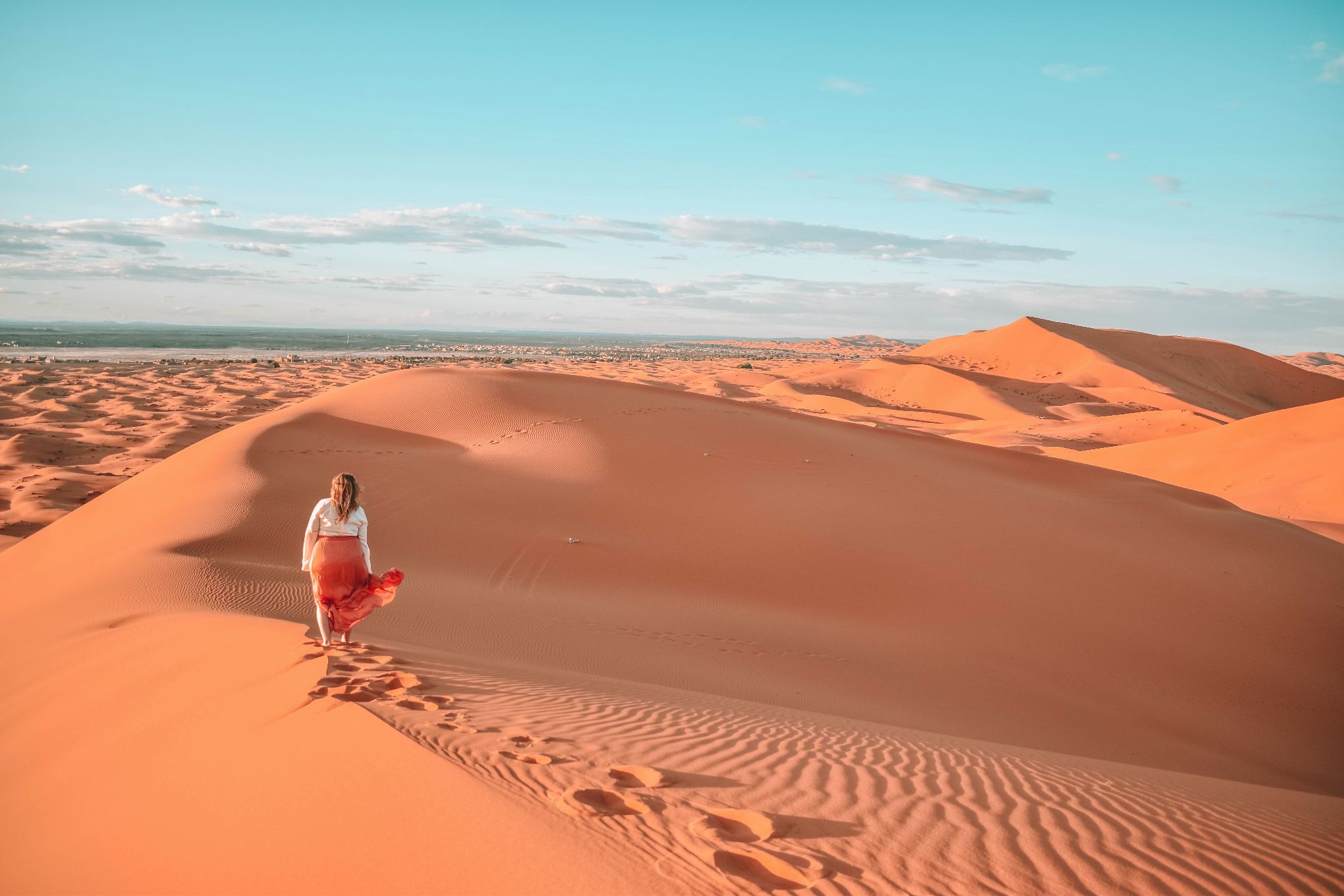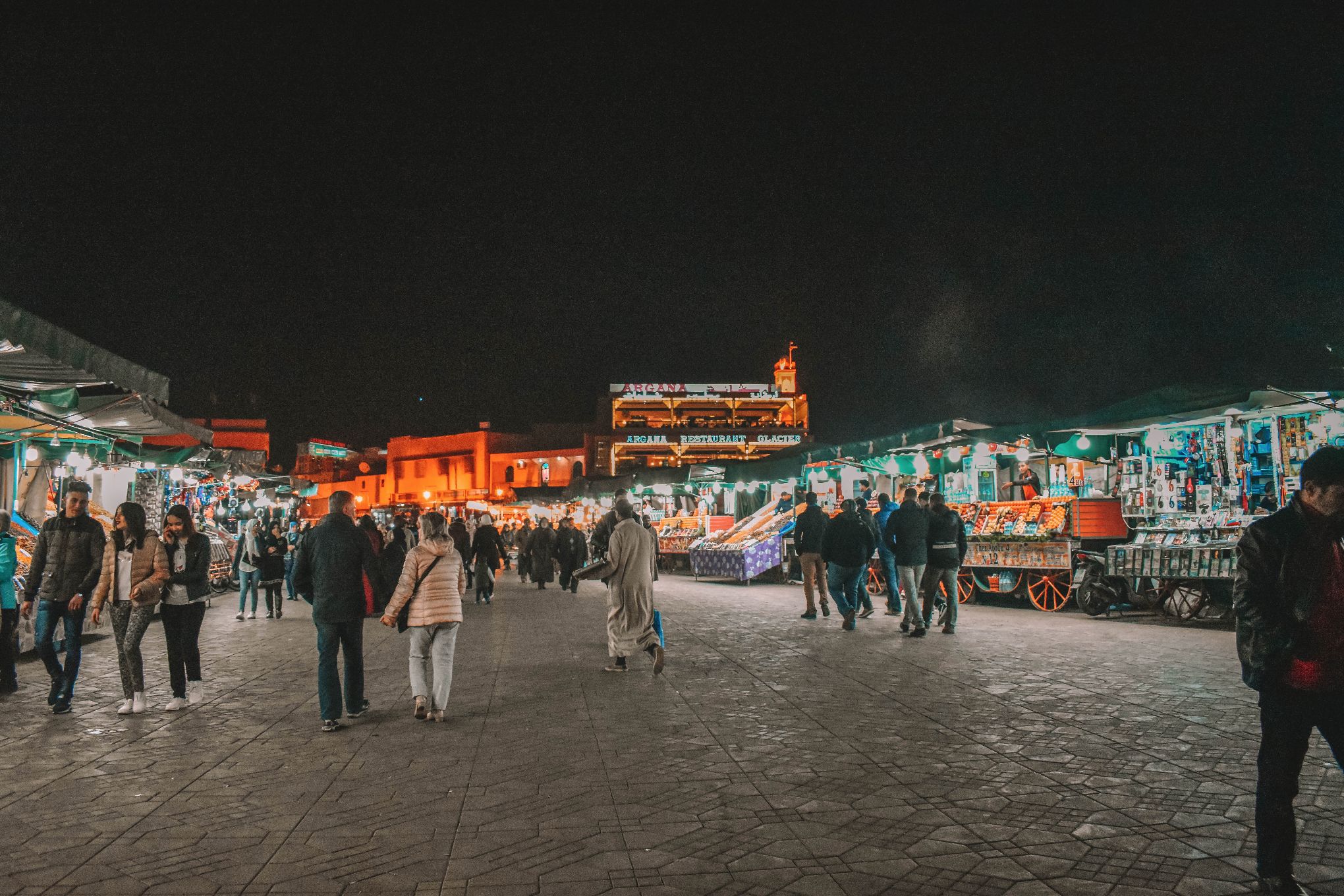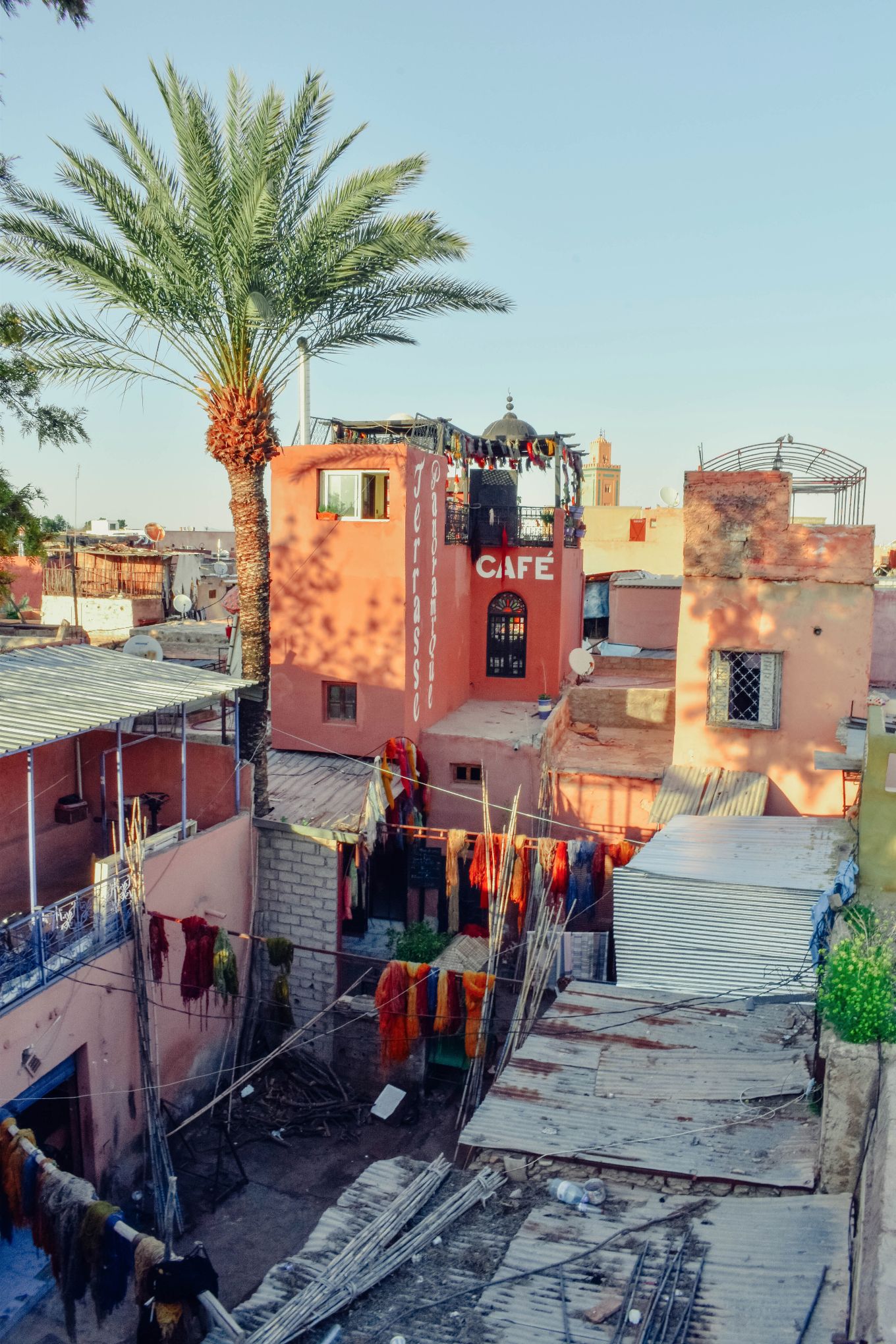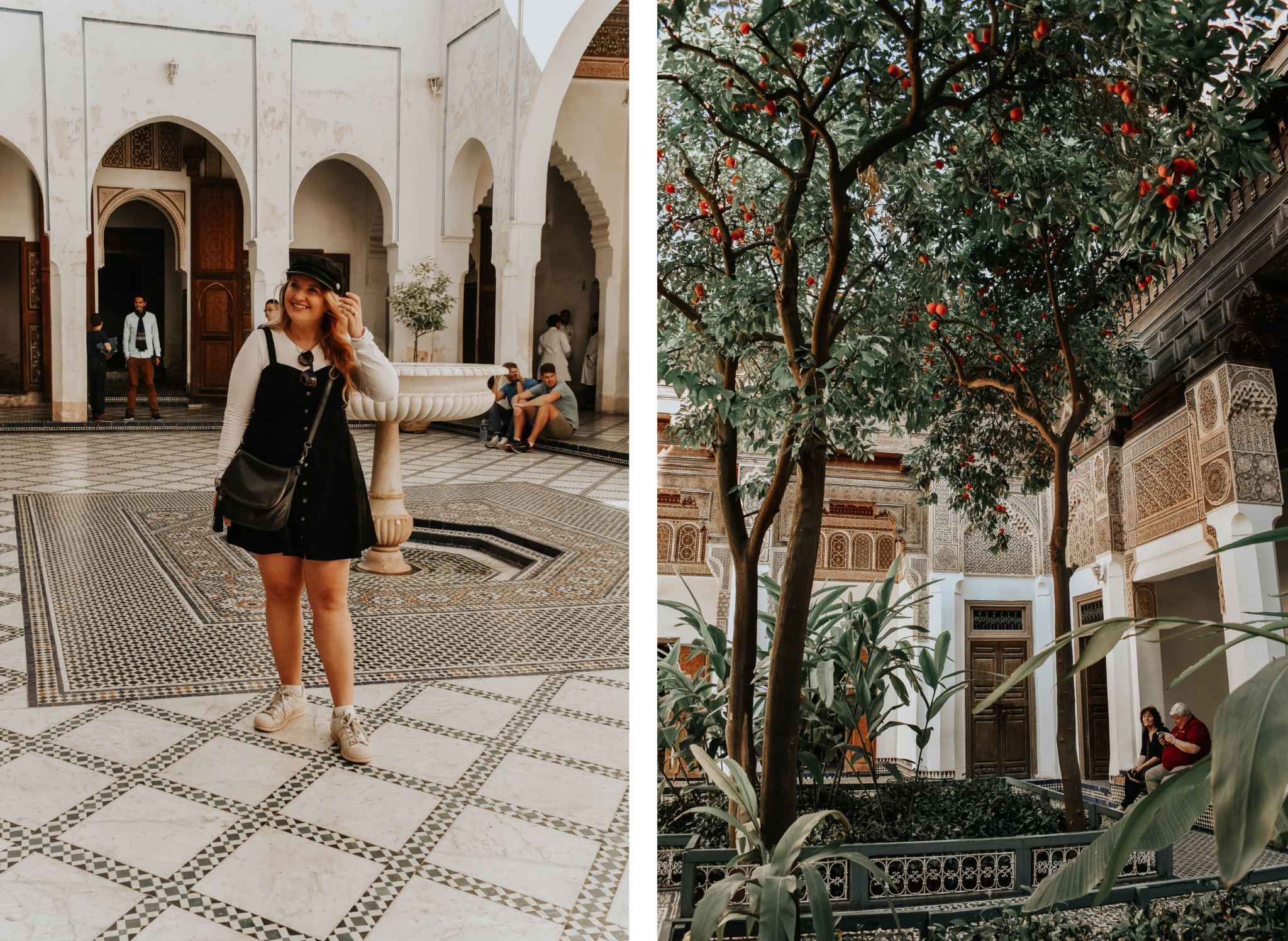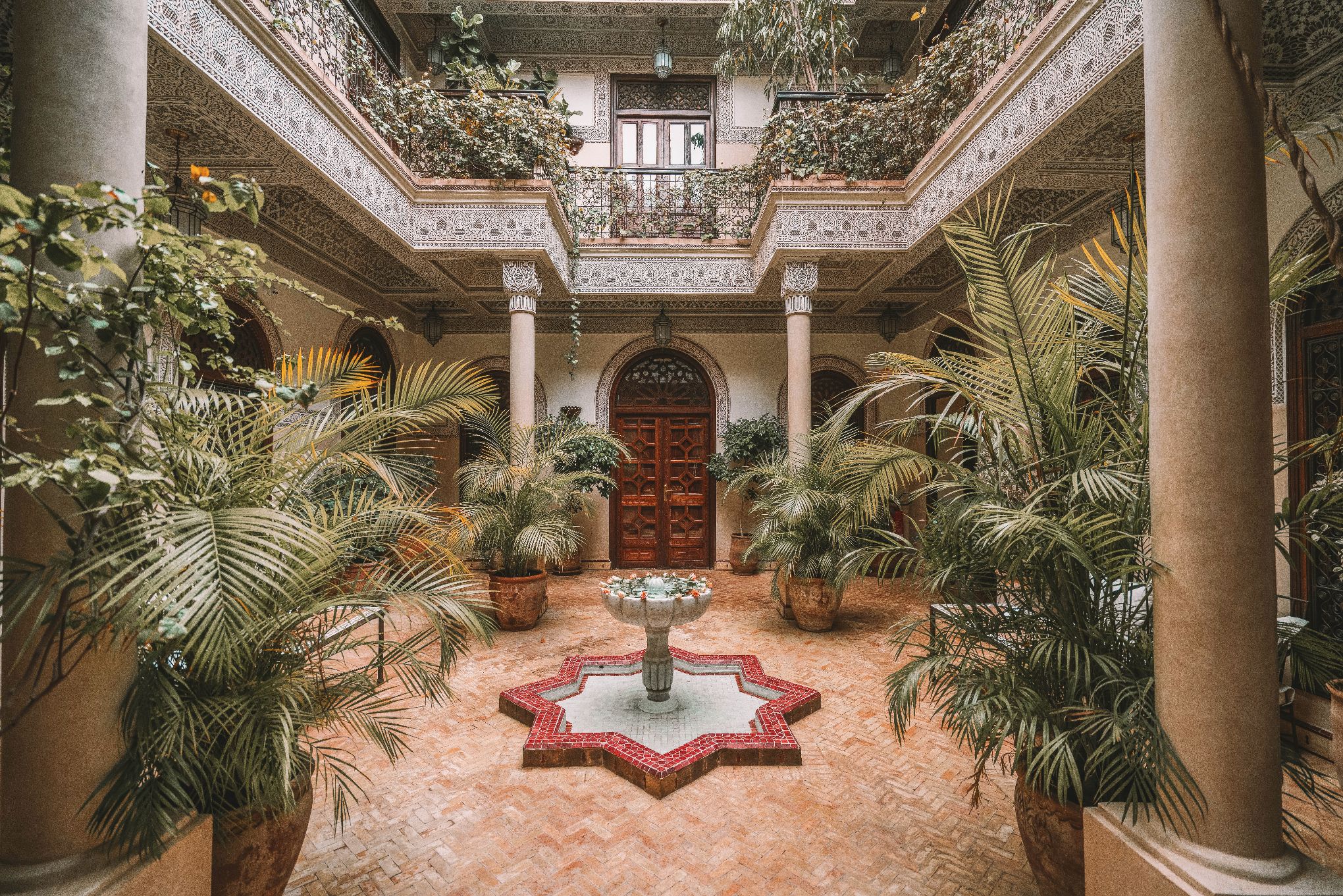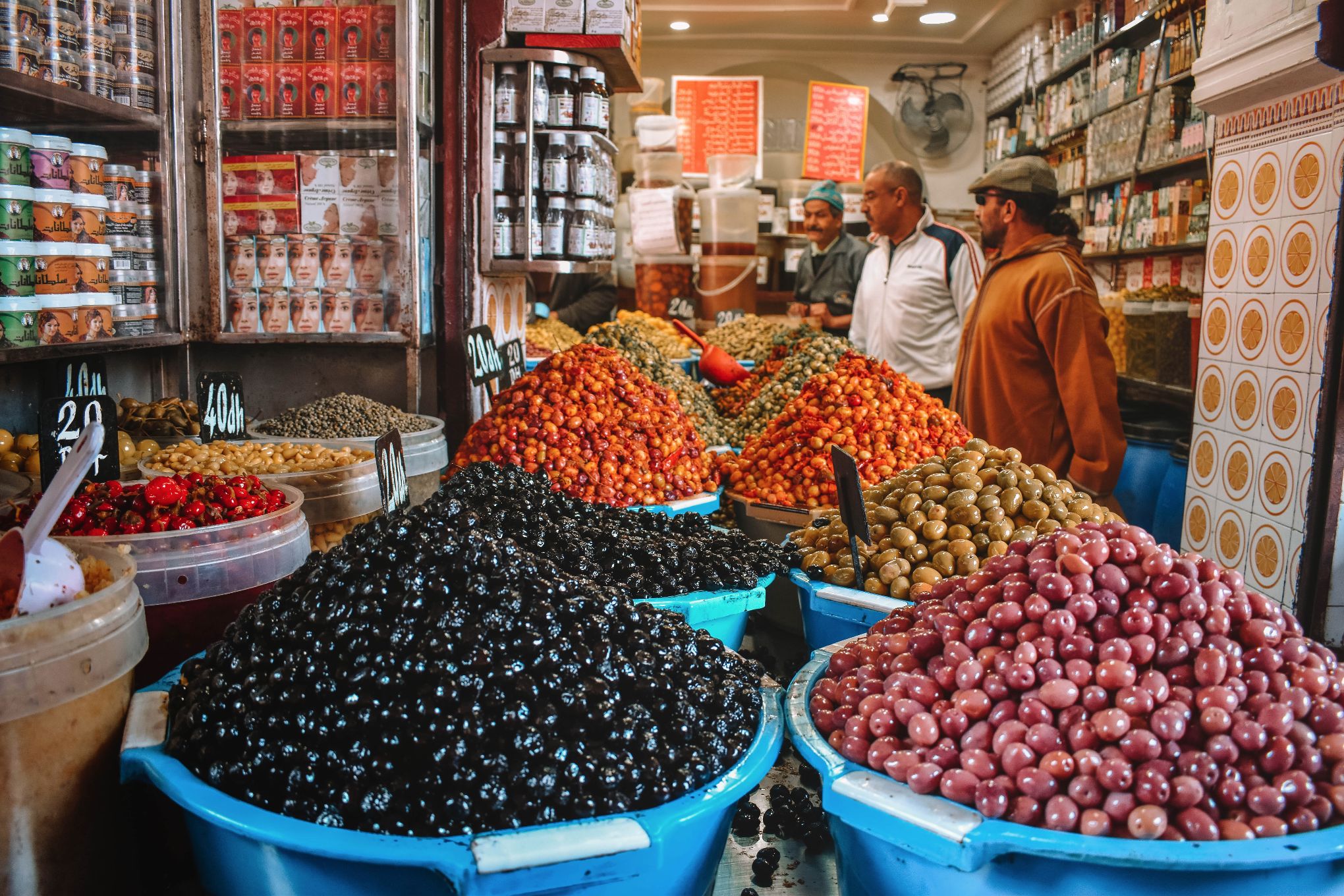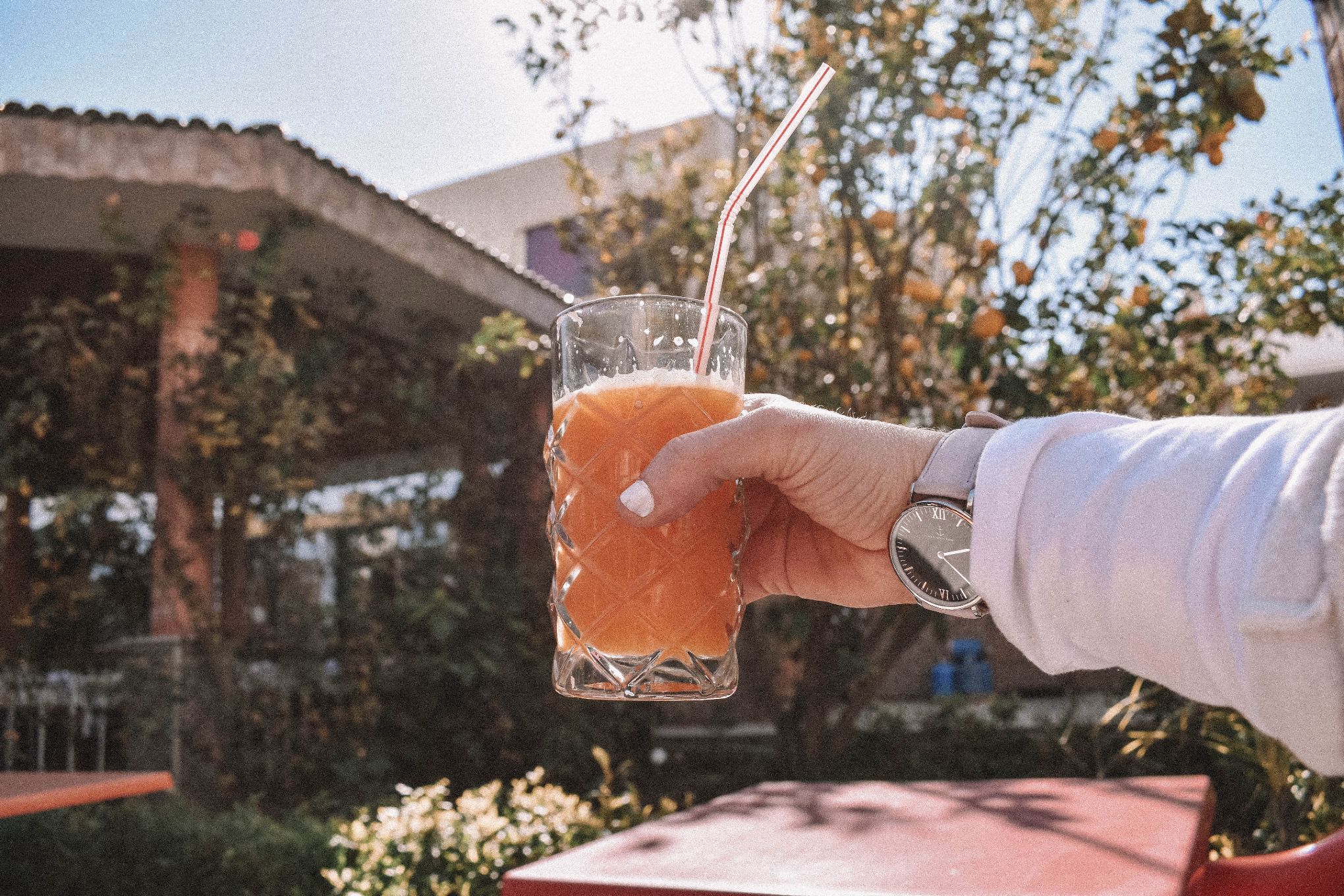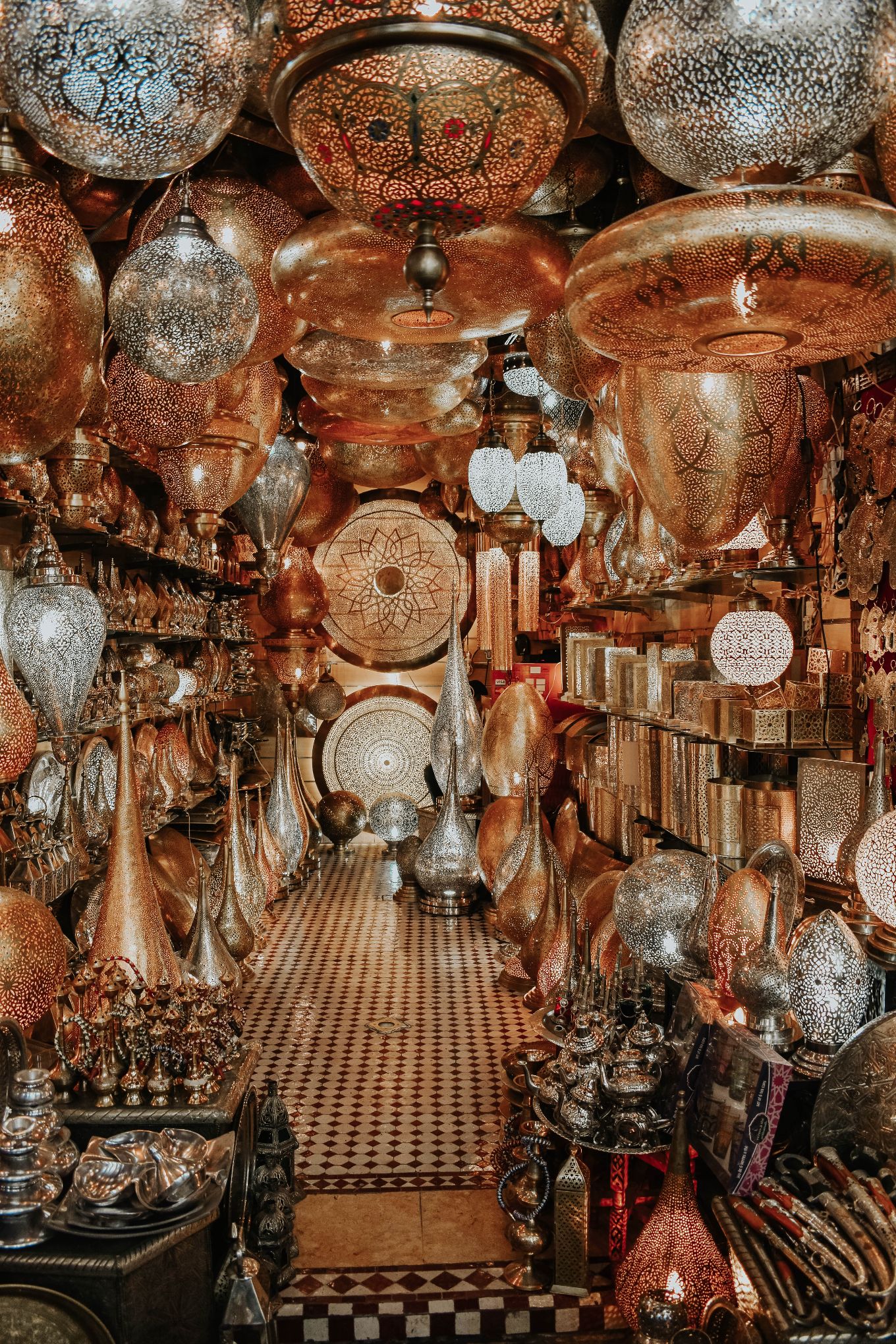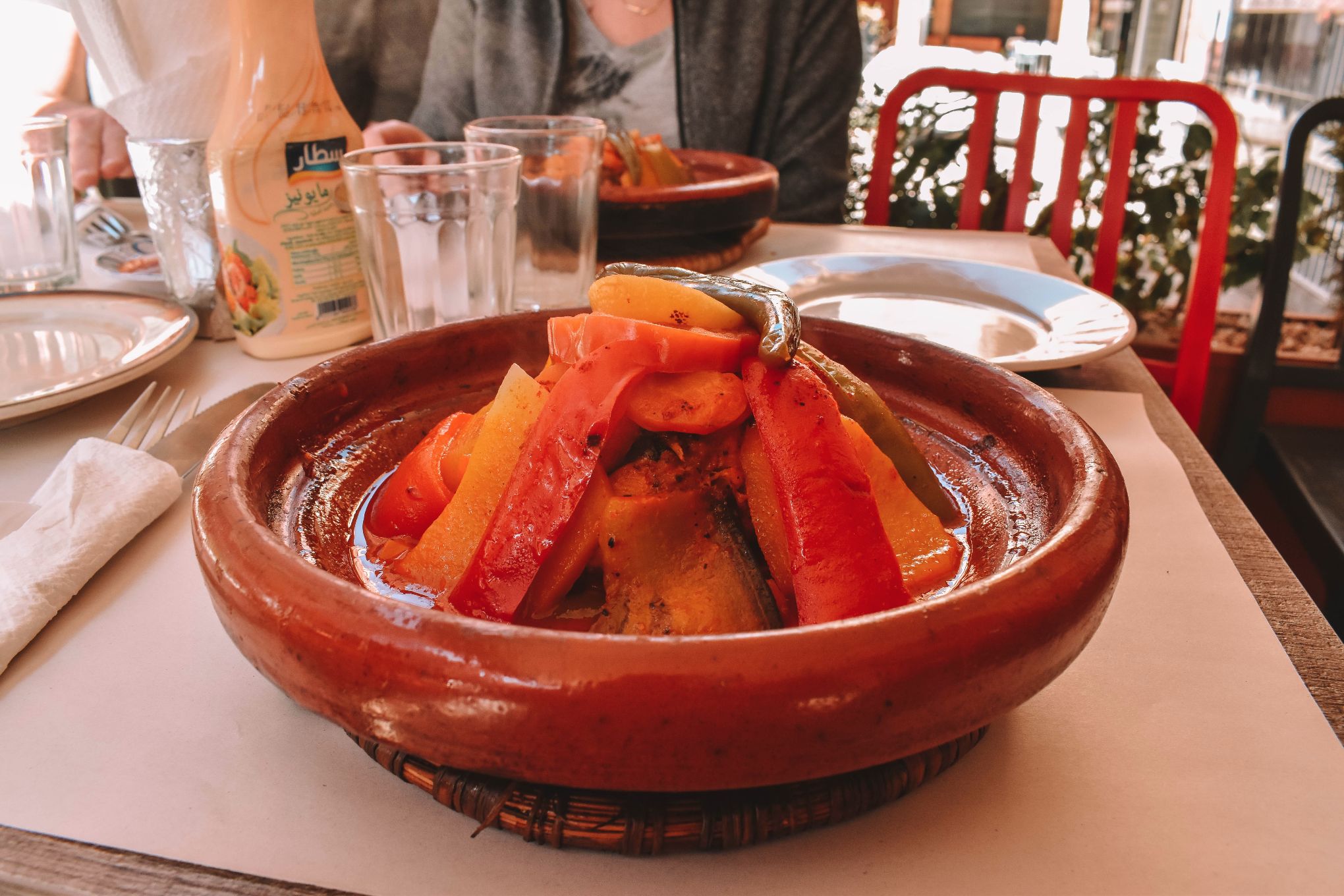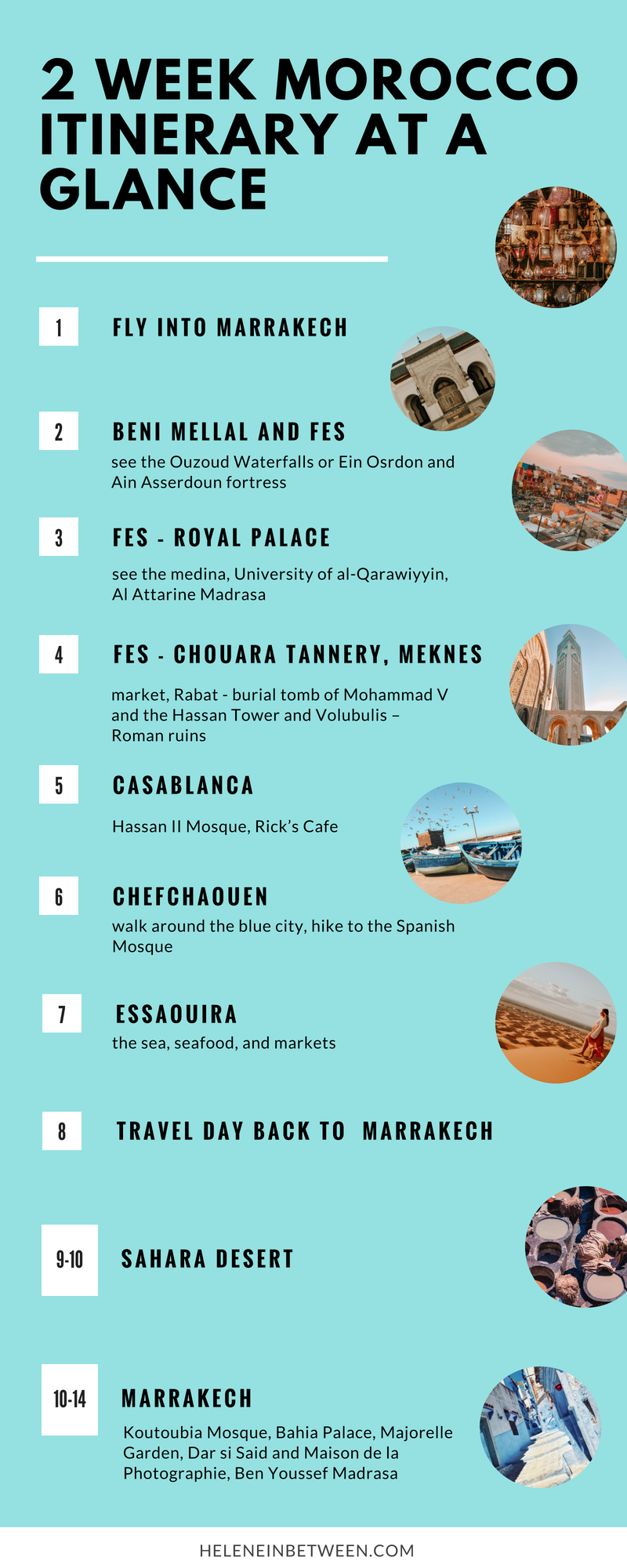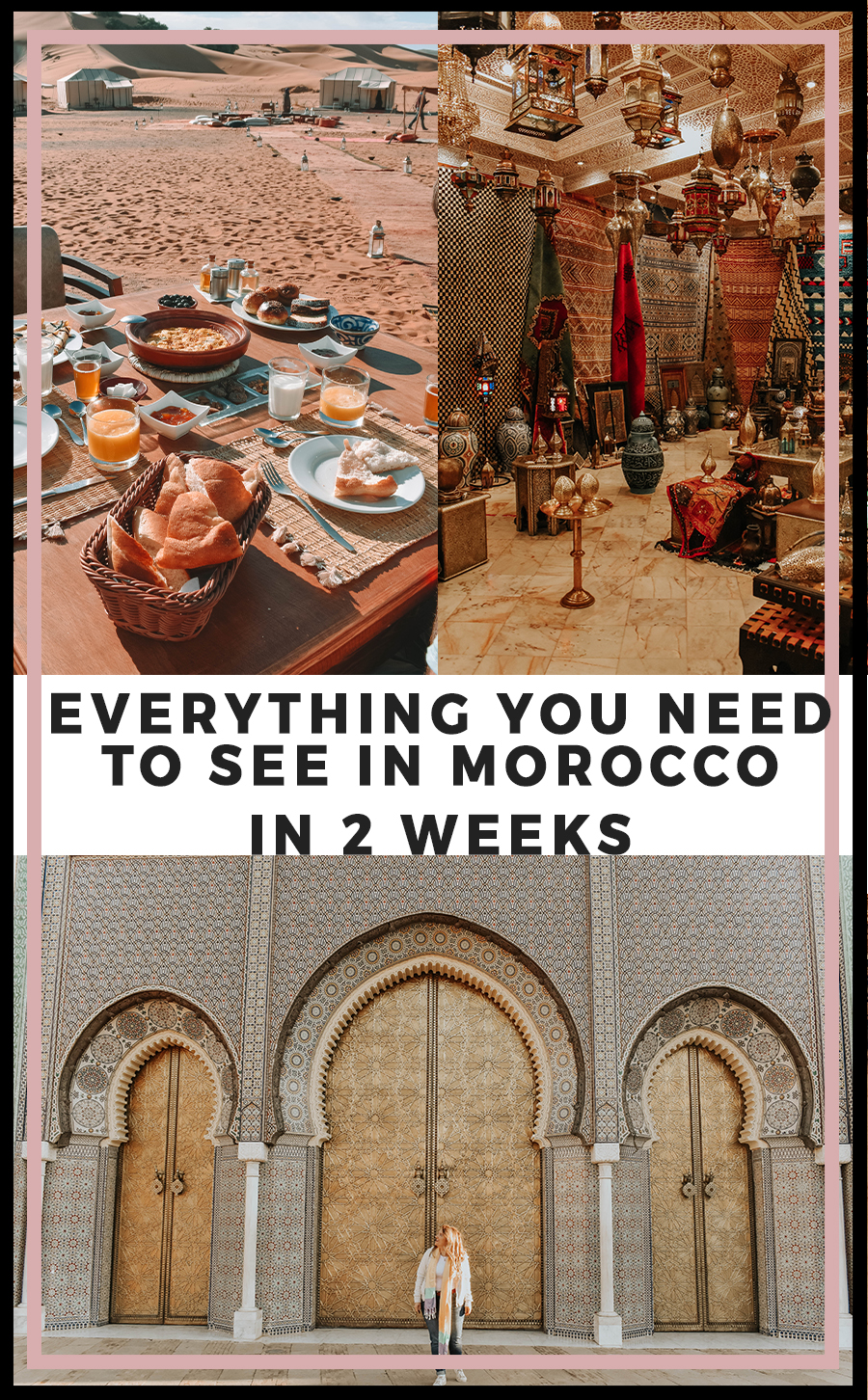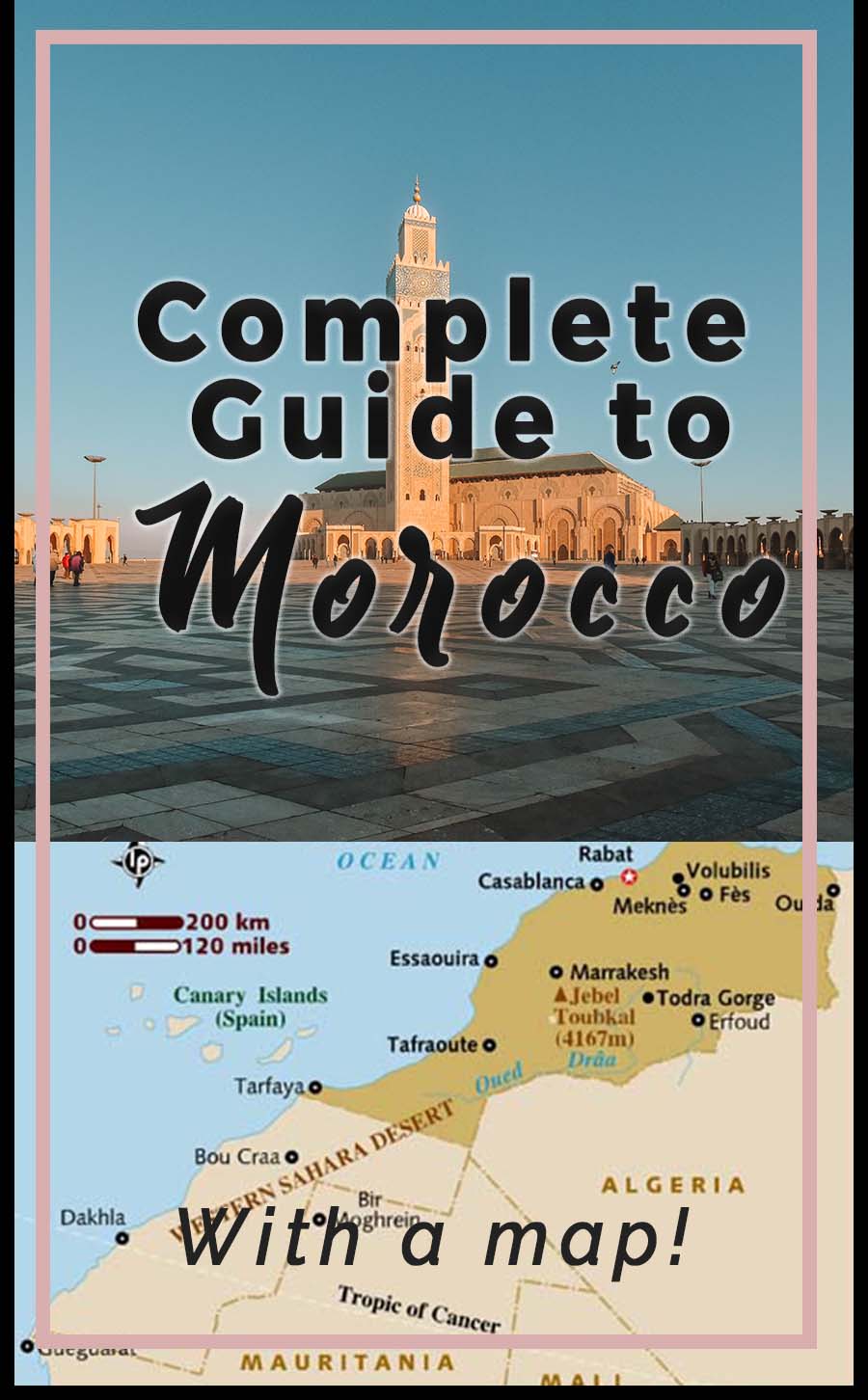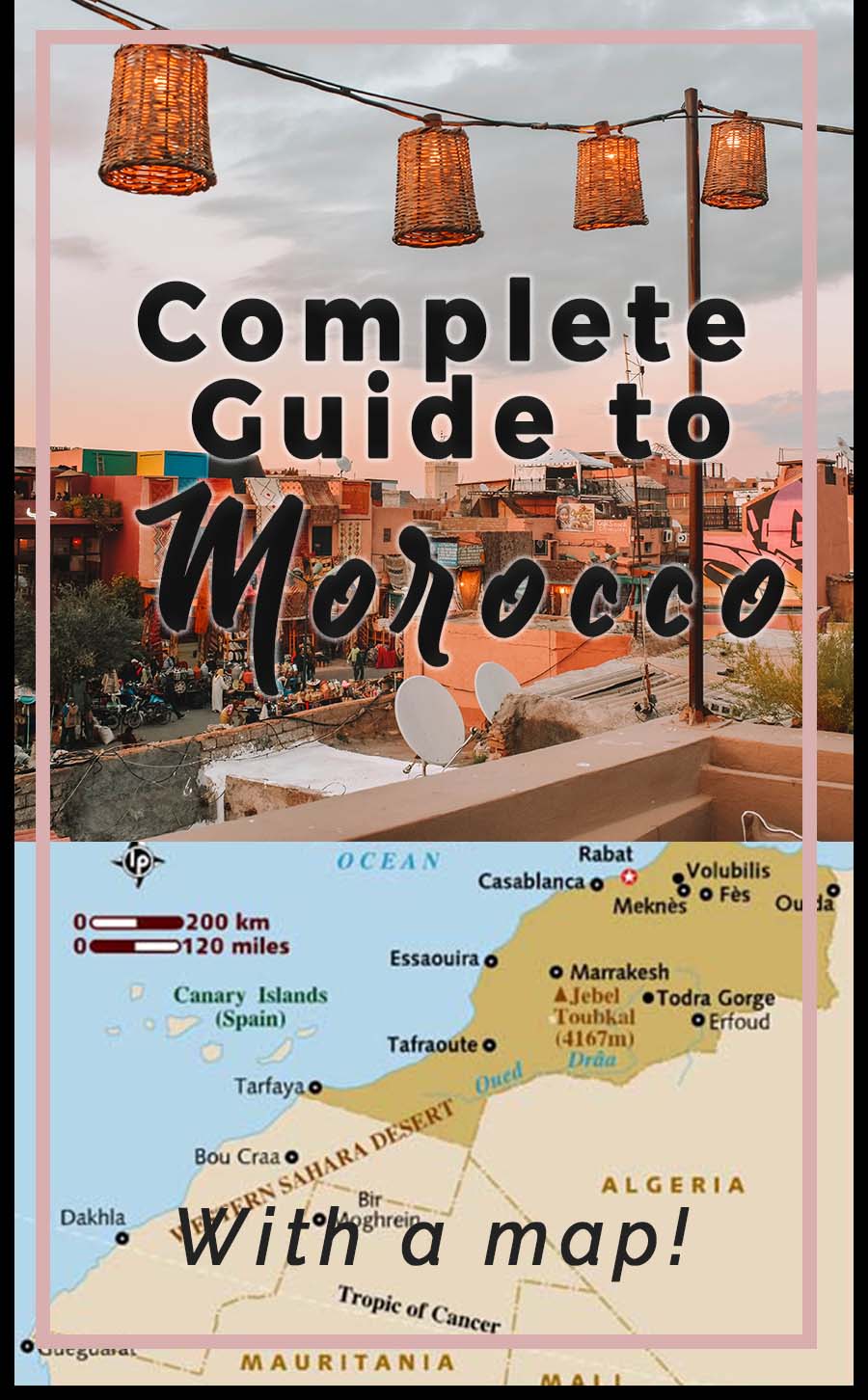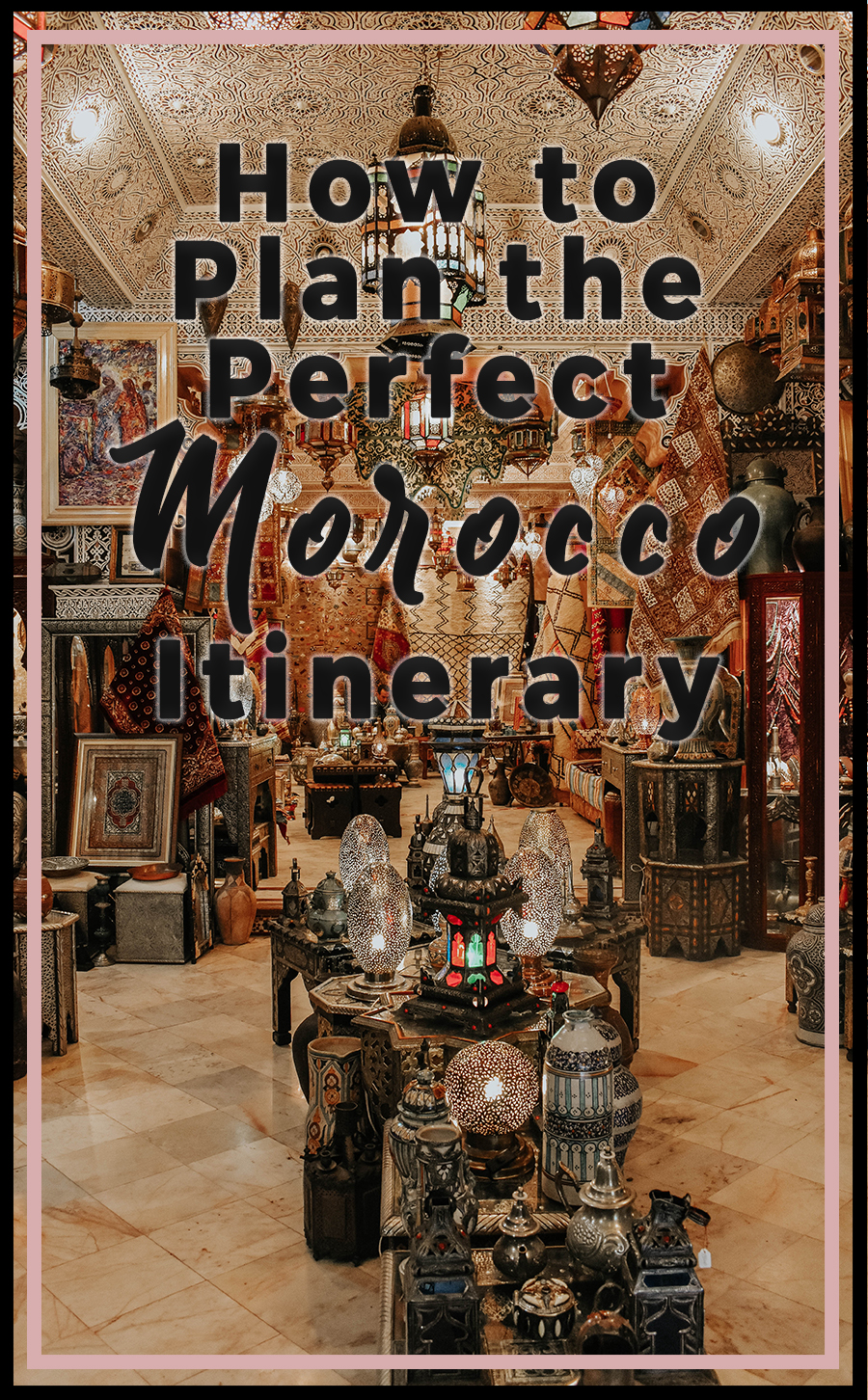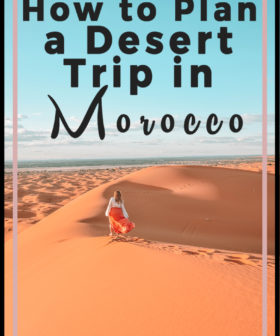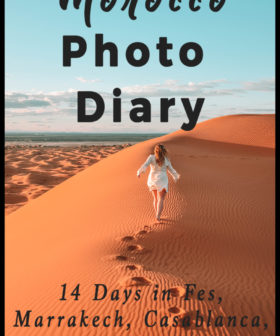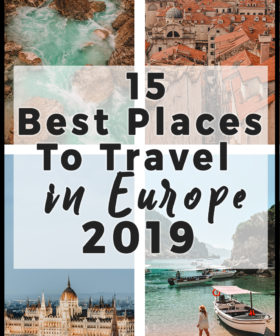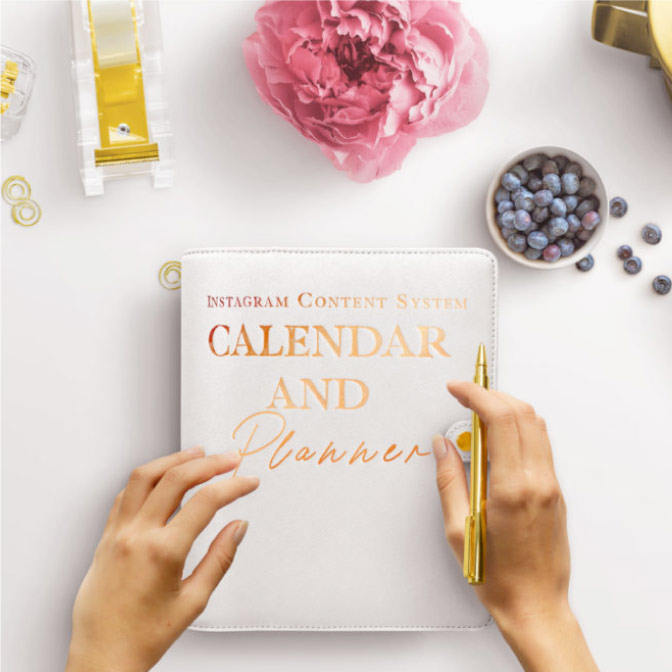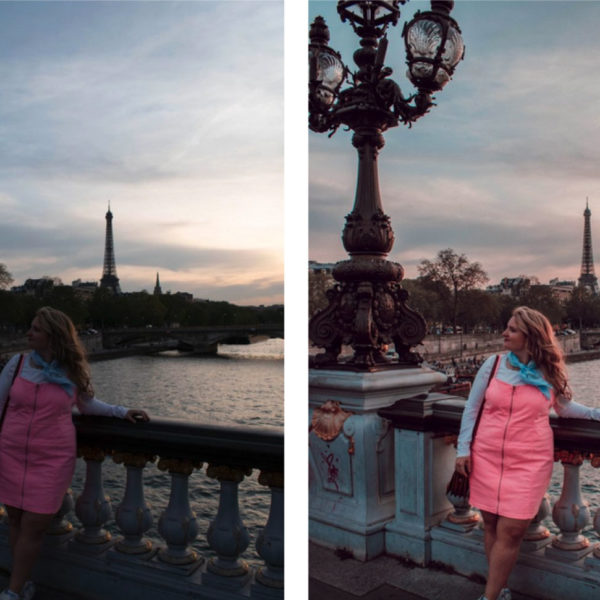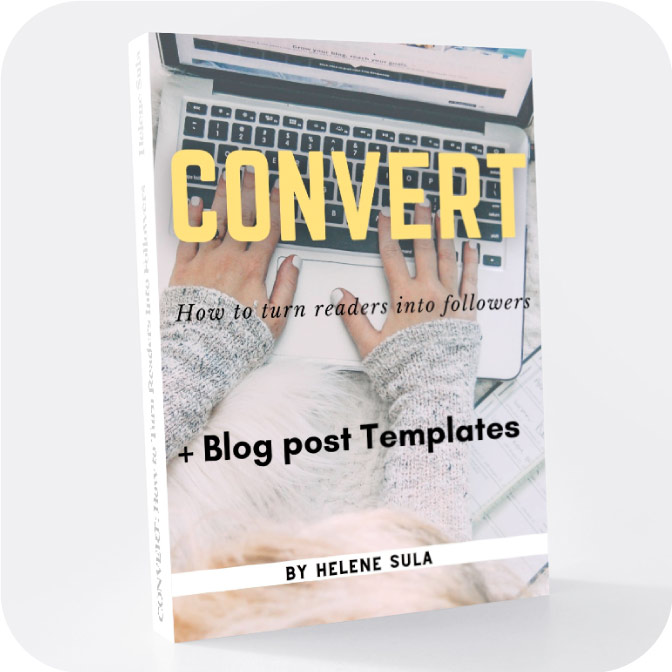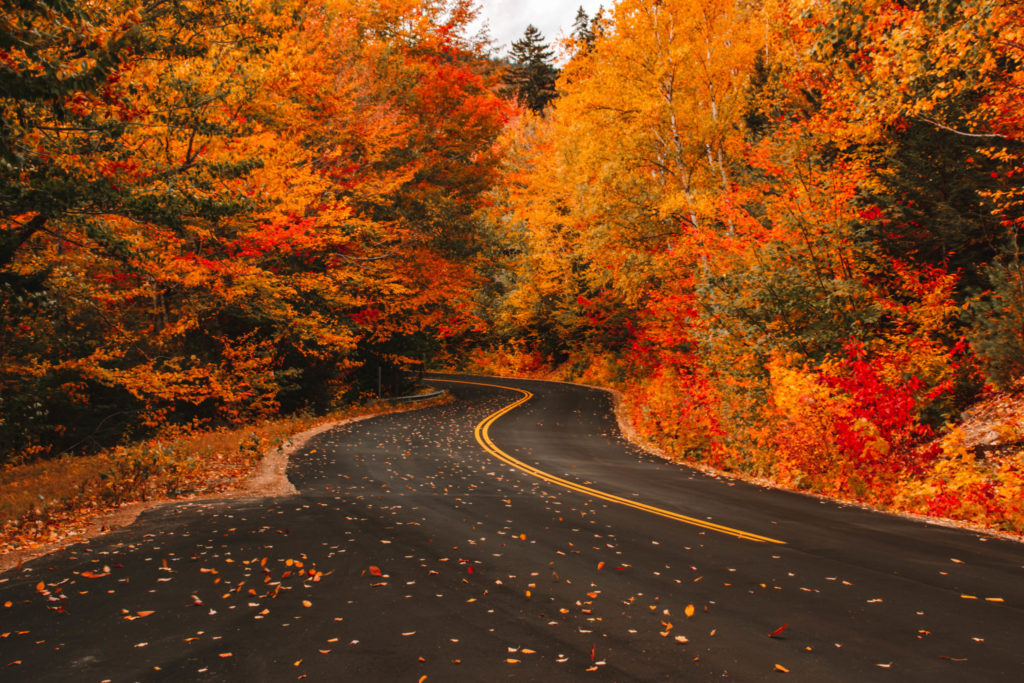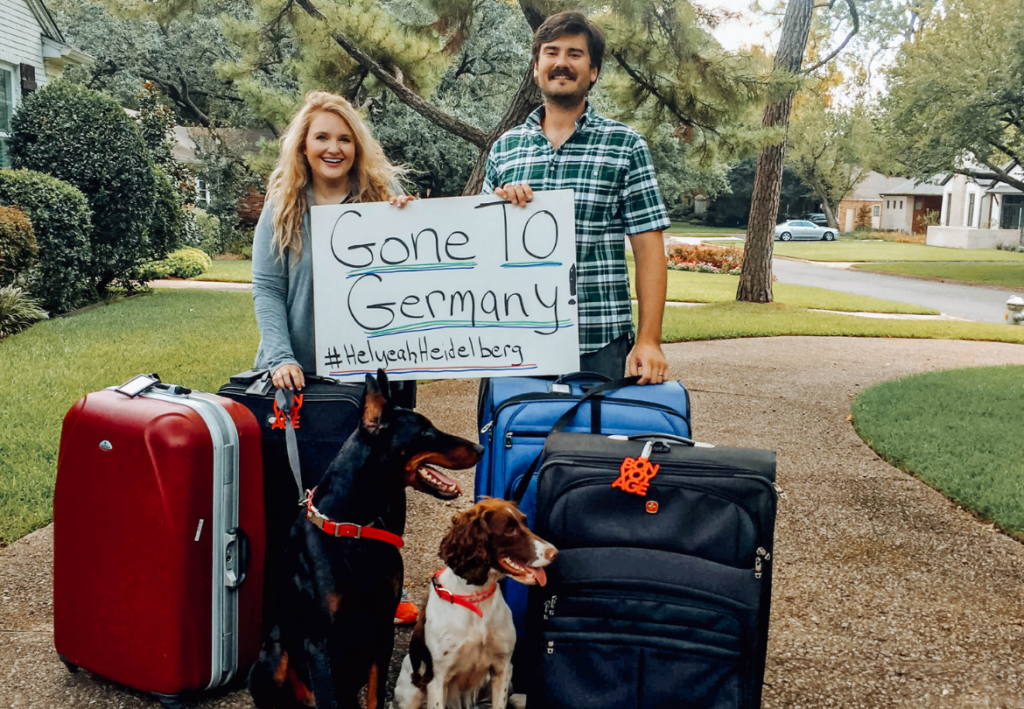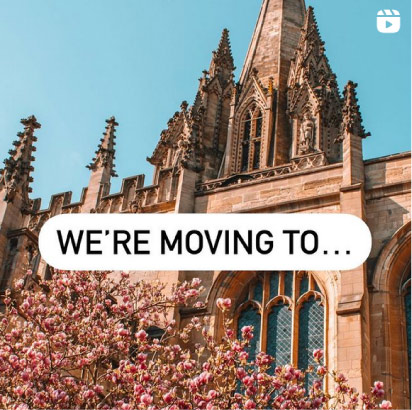There are some trips that you can plan spontaneously. You can fly by the seat of your pants and still manage to see all there is to see. Not so much in Morocco. Instead, you need to have an idea of where you want to go and a good schedule of what to see and do. Morocco is a surprisingly large country that offers many different experiences. From the Sahara desert, the bustling medinas, and the intricate maze of streets, you'll want to have a plan. I've mapped out the perfect two week Morocco itinerary that will ensure you see the magnitude of this interesting country.
Below you can find a map of all the places discussed in this post:
[powr-map id=5b2f7b07_1526645750]
Morocco always felt a bit mysterious to me. Sure, there were the numerous Instagram pictures in the lantern shops and the teal and white colored riads (small hotels). But what about the rich culture of the cities? How did people really live? And how can you get the most out of a visit to Morocco? Africa's northern country felt like such a far off place, but truthfully it's almost touching Spain and has an eclectic mix of cultures and climates. And I couldn't wait to explore.
These were the questions I pondered as we took a flight from Germany into the Marrakesh airport. I found Morocco to not only be breathtakingly beautiful, but also a true adventure. I hope this itinerary and guide to Morocco will help you plan your trip.
How many days should you spend in Morocco?
A 14 day trek through Morocco is a good start. But of course, you can do a 12 day itinerary or even 10 days and still see a great many places. At the end of this post I'll give you some shorter itinerary ideas as well. You can truly fit so much into two weeks in this country. One thing's for sure, I'll definitely be back.
For this guide, I'm going to share how long to spend in each city, plus hotels for each location.
Itinerary Breakdown:
Day 1: Arrival in Marrakech
I suggest flying in and out of Marrakech. This is a great starting point, and a good place to dive into the culture of Morocco. It's full of typical amenities- you'll find chain restaurants and even an upscale shopping mall, but it still has the charm of Morocco with the old medina and many lovely places to get lost.
The airport in Marrakech was surprisingly nice. Most airports are fairly standard but the design here is unique and looks lovely against the Atlas mountains in the distance. The security to get out of the airport was fairly long, so be prepared to fill out a customs form.
After landing, we took a bus from the airport to our hotel in Marrakech, we dropped off our stuff and immediately walked into the heart of the town. The smell of tajines waft through the air and as the sun set the Jemaa el-Fna square transforms into a stage for street performers, snake charmers, and pickpockets. We grabbed a fresh juice (I chose pineapple and mango) for 10 dirham (equivalent to $1) and walked around in awe. We spent just a quick time in Marrakech since we knew we'd be back towards the end of the trip to really explore.
Day 2: Beni Mellal and Fes
We woke up bright and early and took a two-hour bus ride over to Beni Mellal. This city is between Marrakech and Fes, so it made for the perfect first stop. The main attraction here are the Ouzoud Waterfalls. In the local Berber dialect, Ouzoud means “olive”, and believe me there are plenty of olive trees around. We were shocked to learn that Morocco is home to over 90 million olive trees! Olive trees take 15 years to grow and actually produce olive oil. But once they do they will live for up to 2,000 years. Morocco is continually planting more and more trees and you'll also get your fill of fresh pitted olives almost everywhere you go.
If you don't want to go all the way to the Ouzoud falls, you can see the very nearby Ein Osrdon. It's not quite as grand, but it's a cool view of the city and has lovely gardens. If you go up the hill a bit, you'll see the Ain Asserdoun fortress and get a great view of the city below.
In the picture below, I left the tired camel in the shot. I thought it was important to show that you will see animals treated poorly and for show. This is still a poor country and unfortunately, things like this do happen. I think it's necessary to show a balance of what really happens when you travel.
After stopping for lunch in Beni Mellal we headed to Fes.
This was one of my favorite cities we visited. Not only is it home to the oldest media, it feels like you're stepping into a different world. You're greeted by a grand entrance of blue and green tiles that open up like an impressive welcome. Fes is known as the city of 1,000 gates, each one grander than the next.
Since you've been traveling all day, I suggest having a traditional dinner and heading to bed early. Here's an option for a hotel in Fes.
Day 3: Fes
Get up early and head over to The Royal Palace. The earlier, the better. This way you beat the tourists to see the beautiful gates that lead to the palace. These intricate gates are copper and patterned with highly detailed geometric motifs. In Moroccan culture the motifs never include animals or humans because this goes against the Muslim religion.
Fes was once the capital of Morocco until the French relocated it to Rabat in 1912, yet it remains a more modern and tolerant place.
After you admire the gates, take a walk through the Jewish quarter or “Mellah”. Mellah means “salt” because the Jews were often trading in salt. You'll notice very different, tightly packed homes.
Fes is known as the cultural capital of Morocco. With a maze-like medina, the oldest university, tanneries, and some of the coolest spots to drink mint tea, you'll want to spend all day getting lost. And you just might. The medina is so dense, I suggest having a guide, unless you have ample amount of time. Dating back to the 800's, the medina is full of tiny, twisting alleyways that seem to all look the same. It's the world's largest car-free urban area, with donkeys that cart goods to and from. I have heard some uncomfortable stories of being pickpocketed in Fes, so I highly suggest a guide.
Once in the medinas, you'll find endless shopping, beautiful stores, and handmade objects and spices. Next, head over to University of al-Qarawiyyin, the oldest existing, continually operating university in the world. This is a UNESCO world heritage site started by a woman, Fatima al-Fihri in 859. It's incredibly striking and one of the coolest buildings I've ever seen.
One of my favorite things to do in Fes was to drink mint tea. As you're walking the winding streets in the Fes medina, you'll notice all of these beige, somewhat crummy looking buildings. But then, you step inside to find overwhelming opulent decor. As our guide said, “Moroccan houses are like Moroccan women- modest on the outside, and beautiful once they take their clothes off!”
Inside is an absolutely grand space fit for kings and queens. This is the perfect spot for a bite to eat and a refreshingly sweet mint tea.
Near the university, head to Al Attarine Madrasa. This is an Islamic school of learning and has incredible, intricate and ornate architecture.
If you'd like to see more beautiful architecture, go to Medersa Bou Inania. This is one of the only religious buildings in the city that non-Muslims can enter.
Around every corner in Fes was something new. It could be gorgeous architecture, a quiet corner, an incredible shop filled with ornamental vases, or a crumbling corner. It was an adventure with each step.
Where to eat in Fes:
Cafe Clock – traditional, quick, and uber popular
Ruined Garden – hip, beautiful, great for lunch and pictures
Dar Roumana – traditional Moroccan with a twist in a cozy, intimate atmosphere, make a reservation
Fes et Gestes – Traditional medina house with beautiful courtyard and the perfect spot for mint tea. You'd be remiss to visit Fes and not taste the mint tea!
Day 4: Fes then Meknes, Rabat, and Volubilis
Cover your nose, and head to the tanneries. Yes, it's very very smelly. But it's worth the experience to see how leather is made. The process really surprised me. I suggest going to the Chouara Tannery to get a look inside. If you want a tour, they will gladly offer you one, but expect to pay them a tip. Nearby, are also many rug shops including the famous Chez Haidou.
If you'd like to skip the tanneries but still want to get a glimpse, head over to Shop 64. It's up a maze of steps but a great place for shopping and a non-smelly view of the tannery.
On your way out of Fes, make sure you head up to the top at fortress Borj Nord and the Merenid Tombs for an incredible view of the labyrinth of the medina. You'll find a 16th-century fortress and an arms museum. I wish we had more time to see more and if I had to go back I think I would have added an additional day in Fes. There was so much to see and I just really enjoyed it here!
Stop in Meknes for the market and lunch. This is a city that's a much slower pace than Fes and makes for a nice break.
From, here, enjoy the incredible landscape as you make your way to Volubilis. High above the valley you'll find 2,000 year old Roman ruins. Volubilis was the administrative center of the kingdom of Mauretania and one of the more remote cities within the Roman Empire. I suggest taking a guided tour – it only lasts about one hour, to get the most out of your visit.
We'll make our way to Rabat to see the grand burial tomb of Mohammad V and the Hassan Tower. When you first come upon the tower, it looks like it was split in half. Really, it was never completed. These are conveniently located right next to one another so it's easy to see both.
We also took a trip to see the King's Palace but it's mostly closed off, so this isn't something I would advise you to do. You basically stand a few hundred feet away from armed guards. Next, we headed to Casablanca where we got in late and spent the night.
PRO TIP: If you'd like to skip the cities in between, you can easily take the train from Fes to Casablanca for under $30.
Day 5: Casablanca
I was so excited for Casablanca. I love the movie (Casablanca) and even though I know it wasn't filmed there, I just didn't care. It already felt a bit romantic to me. What can I say? I'm a sap.
First things first, we checked out the incredible Hassan II Mosque. This alone was one of my highlights of Morocco. This is the biggest mosque in Morocco and the 3rd largest in the world. It's so large, clean, and every square inch is detailed. Even the lights are patterned with geometric mosaics. The architect was actually French but used all materials for the mosque sourced directly from Morocco. For instance, the wood is from the Atlas Mountains in Ifrane. The plaster is handmade and takes 4 days for just one square meter.
There are only two things that are not Moroccan: the chandeliers are Venetian glass (57 of them that weight 900 kilos each!) and some marble from Italy.
Capacity in the Mosque is about 25,000 worshipers inside and 80,000 outside. So, a total of around 105,000 people. Women pray above in the mezzanine which holds about 5,000. In total, it's 90,000 square meters inside and outside and it faces to the east, in the direction of God.
The mosque took only 6 years to make and was started in 1987. If that sounds fast, it's because there were 10,000 craftsmen and 3,000 workers. Work on the mosque happened 24/7.
The cost of the mosque is unknown but the people of Morocco donated 800 million and Hassan III donated at least 1/3rd of the total cost of the mosque. I would imagine billions of dollars. I've never seen anything so detailed in my life.
Every day, 200 people work to clean the mosque. It does cost money to go in and have a tour but this is one of the few mosques non religious can enter and I HIGHLY recommend it. This 3-hour tour of Casablanca includes a guided visit to the Mosque and is a good option.
From here, we went to the elaborate Palace of Justice. It seemed each building we visited was more beautiful than the next. Again, you turn a corner and discover a unique, handcrafted arch. We walked around the market for lunch and ate seasoned olives straight out of a bag.
For dinner, we cleaned up and headed to Rick's Cafe. I was so excited. Rick's Cafe is where the movie Casablanca is set and they made the restaurant look just like the movie. I was enthralled. The drinks were a bit expensive, but also delicious.
Dinner was at Port De Peche, a lively, casual place with delicious seafood.
For where to stay in Casablanca, you'll find many modern options. Le 135 hotel is a good choice and very nice. Or you can opt for the Hotel Moroccan House Casablanca.
Day 6: Chefchaouen
Known as the “blue city” because of all the blue colored buildings, Chefchaouen is a feast for the eyes. Think of it like Santorini, but instead of mostly white with a hint of blue, it's a multitude of shades of blue. One day here is rather quick so, if you wanted to extend your stay I wouldn't blame you. This city is very popular with those looking to snap pictures, but you can also find areas to get away from the crowds or head to the national parks.
If you have time, hike over to the Spanish Mosque overlooking Chefchaouen for some peace and quiet and a great view.
A good place to stay is Dar Echchaouen, a 4 -star hotel with traditional Moroccan decor, restaurant, and a pool. Hôtel Koutoubia is also a good option and is under $40 a night.
Day 7: Essaouira
You can easily make it to Essaouira from Marrakech. Taking the bus there is about a 2 hour and 24 minute journey. Many opt for a day trip, but I recommend spending at least one or two nights here. It's a more laid-back atmosphere with a lovely medina, and a relaxed coastal vibe. You'll find live music, souks, and fresh seafood.
Essaouira claims 300 days of sunshine a year so you'll have ample opportunities to lie in the sun. The markets here are surprisingly well priced and friendly. Many of the people we met along the way said they ended up finally purchasing something after the myriad of shopping in Essaouira. For around $70 a night you can stay in a lovely 5 -star hotel, Hotel Palais D'Essaouira. Or, if you're looking for something more budget friendly, check out Les Matins Bleus, for less than $40 and absolutely lovely!
Day 8: Marrackech
Travel back to Marrakech and use this day to get some rest, tomorrow will be a long travel day!
If you'd like, I suggest checking out the medina here and eat at the trendy restaurant, Nomad. It's exceptionally good and has a really cool view of the city.
Day 9 – 11: Desert
Wake up as early as humanly possible and head to the desert! Seriously, one of the most magical trips in my life. We rented a car and stayed in the Sahara with Merzouga Luxury Desert Camps. I've written an extremely detailed guide on how to plan a desert trip in Morocco. From renting a car, where to stay, what to do, how to take incredible dune pictures and how to avoid camel spit! It's all here.
For the desert, it's best to have a plan ahead of time. Especially when it comes to deciding if you'd like to spend one or two nights. Many tours will stop in between, and in my opinion, this is not necessary. It's much better to spend more time in the desert. Find my guide here.
Day: 12-14 Marrakech
Marrakech has so much to offer which is why it's a good idea to spend a few days here. I liked getting to take my time and really get to know this city a bit better.
Michael and I spent a lot of time wandering the souks and browsing for the perfect souvenir. We often buy food to take home so we can cook up traditional dishes later. This time, we purchased a silver incense diffuser and spicy tea. This tea was one of my favorite discoveries while eating in Morocco.
At night, the medina becomes a boisterous atmosphere of make-shift restaurants. Tents are put up and the different restaurants are beckoning passerbyers to come and eat at their stand. They might sing, or have a funny rhyme, or just straight up tell you a joke to get you to come. Some might find it overwhelming, we found it awesome. We ate so cheaply. One of my favorite things to eat was a simple sandwich made sort of like a pita, stuffed with egg, potatoes, oil, and spices. This was a whopping 80 cents!
You'll also find some more eye-opening things in the market such as snails and sheep's brain. Michael decided to be bold one night and try some of the dishes. We sat next to a couple who lived in London but both were from Morocco. After dinner they told us we must try this incredible dessert. It was a spicy ginger cake that you drink with the tea. It ignites your taste-buds and we learned that the couple mentioned that it's a natural aphrodisiac.
We went to the very touristic Majorelle Garden. I have to tell you, I wasn't overly impressed. Sure, it's a lovely garden but if I had to wait in line (I didn't since we had a guide) I definitely wouldn't wait. It's pretty, and the Berber museum is cool, but it's really just a simple garden. Right next door is the YSL museum and there's also a plaque dedicated to the designer in the garden as well.
Instead, head back to the market and check out the dye souks. You can see up close and personal how they dye clothing. It's really incredible to see it done. Or just spend time marveling in the Jemaa el-Fna square. If you missed the tanneries in Fes, you can still see them in Marrakech. Just remember they will ask for a tip!
Don't miss Bahia Palace. This is only 10 dirham to get in and it's a quiet place in the middle of the busy city. The architecture here is phenomenal and such a nice change from the busy atmosphere in Marrakech. To me, I'd rather spend time here than in the Majorelle Garden.
You can't miss it, but the Koutoubia Mosque is worth mentioning. It's the largest mosque in Marrakech and dates back to the 12th century. There are no stairs, rather a ramp, so a horse could gallop up and the rider could announce the prayers to the city.
Two museums I really loved were Dar si Said and the Maison de la Photographie. Dar si Said displays beautiful Moroccan architecture and objects. This is a good way to understand the history of Moroccan culture. Surprisingly, the photography museums was one of my favorites. It showed the rich history of Morocco through photographers eyes and helps me understand how the country has changed over the years. Don't forget to go up to the terrasse for a beautiful view of Marrakech.
Ben Youssef Madrasa is one of the most photographed places in the world. This Islamic school was once the largest in North Africa and now is like a museum into the past. The incredible architecture is worth it for the entrance. If you'd like to see more intricate architecture, check out the beautiful Saadian Tombs.
Where to stay in Marrakech
First, let me tell you where NOT to stay. Sangho Privilege is much too far outside the city, located right near a dangerous neighborhood, and full of crumbling walls and overpriced food. Quite possibly the worst meal I've ever had in my life. Michael was served uncooked shrimp with some sort of slime for salad dressing. The pictures make it look nice, but I assure you, it is not.
There are so many cool riads that are well priced around Marrakech. Here's what I suggest.
Rodamón hostel – Don't let the word hostel food you. This is an awesome spot with a bar and music.
Riad Star – a cool pool and located in the media.
Riad Yasmine – The Instagram famous one!
Riad Dombaraka – Also lovely, and not as pricey.
La Mamounia – Another Insta famous pool and beautiful place to stay.
Where to eat in Marrakech:
Besides the market, here's what I suggest:
Nomad – fun, hip, trendy, traditional, great views
BlackChich Cafe – inexpensive Moroccan food
Barometre Marrakech – not cheap but one of the top rated restaurants for French, Mediterranean fusion.
If you have less time you can always cut some days off of Marrakech at the end or one of the day trips to easily make this a 10-day trip, rather than a two week Morocco trip.
Pro Morocco Travel Tips:
I racked up a rather large data bill in Morocco. Don't be like me. Buy a SIM card. They are so incredibly cheap, about $15 total for the Simcard plus 10 gigabytes worth of data. You can also buy a mobile hot spot for travel if you'd rather.
The culture in Morocco is all about haggling for the best price. Not just in the markets. But for things like cabs, experiences, clothing, etc. But, one thing we never noticed anyone bargaining with us on was food. A pro haggling tip is to have an idea in mind of what you'd like to pay and shoot much lower than the price offered.
Fridays are holy days, so be prepared for things to be closed. We went into the market in Marrakech on a Friday morning and nothing was opened. They will typically open later in the day or the following day, so just be aware.
The Morocco Dirham (DH) is roughly 11 to 1 for exchange rate. That means if it's 11 DH it's $1 USD. It can be incredibly cheap. We found food and hotels to be optimally priced. However, it seems in the market (lamps, rugs, etc) comparable to US and Europe. A great place to get or exchange money is at your hotel.
Don't drink the water. I suggest staying on the safe side and drinking bottled (usually about 10-20 DH). Of course it's not that dangerous as I was fine with the ice in my drink. My personal drink of choice on the trip was a glass of delicious orange juice.
What to buy in Morocco:
- Leather goods
- Silver (make sure it has an authenticity number on it or it’s fake silver)
- Argan oil (make sure it has a serial number or it’s not good quality)
- Rose Oil
- Lamps – they will ship overseas!
- Rug
- Mint Tea
- Tajine to cook traditional dishes at home
Is Morocco safe?
Before traveling to Morocco I'll admit I didn't know much about it. The things I read online warned that women travelers needed to be aware, to dress properly, and to know your surroundings. While I do agree with that advice, the same can be found in many large cities and countries. It's true, Morocco is a Muslim country, and most of the women are covered up. However, as I traveled with my husband I didn't feel unsafe. Like any country you should know their customs and laws.
To recap, here's what I suggest for two weeks in Morocco.
2 Week Morocco Itinerary At a Glance:
Day 1: Fly into Marrakech
Day 2: Beni Mellal and Fes – see the Ouzoud Waterfalls or Ein Osrdon and Ain Asserdoun fortress
Day 3: Fes – Royal Palace, see the medina, University of al-Qarawiyyin, Al Attarine Madrasa
Day 4: Fes – Chouara Tannery, Meknes – market, Rabat – burial tomb of Mohammad V and the Hassan Tower and Volubulis – Roman ruins
Day 5: Casablanca – Hassan II Mosque, Rick’s Cafe
Day 6: Chefchaouen – walk around the blue city, hike to the Spanish Mosque
Day 7: Essaouira – the sea, seafood, and markets
Day 8: Travel day back to Marrakech
Day 9-10: Sahara Desert
Day 10-14: Marrakech – Koutoubia Mosque, Bahia Palace, Majorelle Garden, Dar si Said and Maison de la Photographie, Ben Youssef Madrasa
Morocco is one of those places I recommend everyone go at least once. Of course it's lovely, but I think the real takeaways are the incredible people. I hope this guide has helped you with everything you need to plan a perfect trip to Morocco.
Pin it so you don't forget it!

